
Anu and I did a short trip with Maithili and Dr. Abhay Apte (friends from Rohan Tapovan) to some key tourist spots in Uttar Pradesh. It was great to see the the transformation in these cities over the past few years.
Thu, Sep 28: Banaras, Sarnath
We landed in Banaras (also Varanasi or Kashi) at 1.30 am from Pune. It was a direct flight, but the timing of the flight was very late in the night. We had already prebooked a driver and he showed up in a timely manner. We were taken to Hotel Radisson in the Cantonment area in Banaras. We slept at 2.30 am.
In the morning we were up by 8.00 am. We had our breakfast by 9 am and headed out to Sarnath, about 13 km from Banaras. Sarnath is where around 525 BC, at 35 years of age, Gautama Buddha taught his first sermon after attaining enlightenment at Bodh Gaya. It is place of historic importance to Buddhists and is amongst the top 4 cities Lumbini (birth of Buddha), Bodh Gaya (Enlightment), Sarnath (First sermon), Kushinagar (Death).

In Sarnath, we first visited the Mulagandha Kuti, built by a Sri Lankan rich merchant called Dharampal. This is the place where Buddha delivered his first sermon. The temple has got beautiful murals and frescoes by famous Japanese painter Kosetsu Nosu. The frescoes covered walls in the interior depict beautifully entire life of Buddha. At the entrance there is a huge bronze bell donated by royal family of japan. The golden statue of Buddha giving first sermons to 5 disciples is marvellous. The temple also has a Bodhi tree which has been transplanted from a sapling brought from Sri Lanka.

We also visited a small zoo close by.
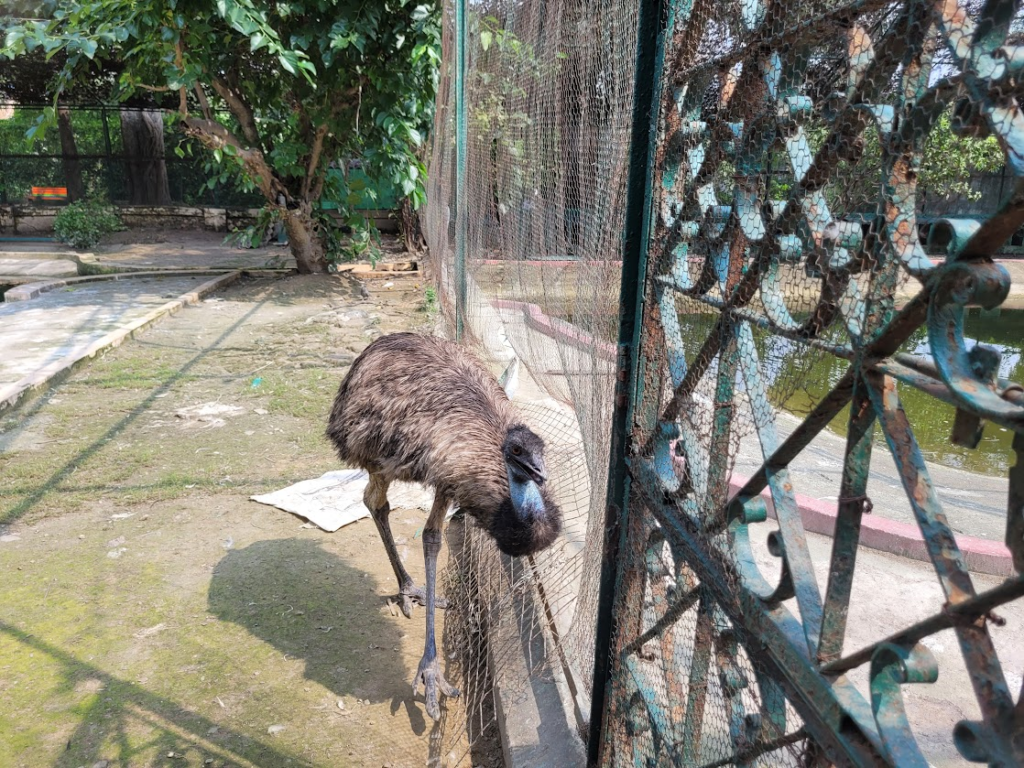
From there, we proceeded to the Sarangnath Mahadev mandir. People who pray at this template are known to have been curred of skin disease.

We made our way to the Sarnath complex which has multiple archaelogical excavations. On the way we drove past Chaukhandi Stupa (Sita Rasoi) built during Ashok’s reign.

We visted the archaelogical museum. Normally, I do not enjoy archaelogical museums because I am more interested in modern histroy. But I was pleasantly surprised by the great upkeep of the museum, signboards and classification. There was a lot of scultputres with depictions of kaal bhairav, lion heads of Ashok stambha, Shiva killing Andhakasur, 4 important events in budhhas life, Lumbini (birth), Bodh Gaya (enlightenment), Sarnath (sermon), Kushinagar (death). We also saw a large Ashok Chakra. Definitely worth a visit.

We then walked over to the ruins of Sarnath. This area is extremely well kept, clean with paved brick pathways. Narendra Modi had inaugurated this area in 2020. The excavations were done in 1910.

The main feature is the Dhammak Stupa. It is the most massive structure in Sarnath. In its current shape, the stupa is a solid cylinder of bricks and stone reaching a height of 43.6 meters and having a diameter of 28 meters. The basement seems to have survived from Ashoka’s structure, while the stone facing displays delicate floral carvings characteristic of the Gupta era. The wall is covered with exquisitely carved figures of humans and birds, as well as inscriptions in Brahmi script.

We also saw the Dharmarajik Stupa. The Dharmarajika stupa, as it is known after the 10th century inscription giving name to a group of monuments, was constructed at the instance of king Ashok. It is referred to in the texts that after dividing the ashes of the Lord obtained from reopening seven of the earlier stupas, Ashok got many stupas constructed at Buddhist sites with the same name- Dharmarajika.

We also saw the remains of the famous Ashok Stambh from 272 AD. It the national symbol of India. The pillar features Asiatic lions standing back to back on a single block of yellow sandstone, symbolising power, courage, confidence, and pride, mounted on a circular base. The lions are in the museum. The pillar is encased in a glass enclosure.
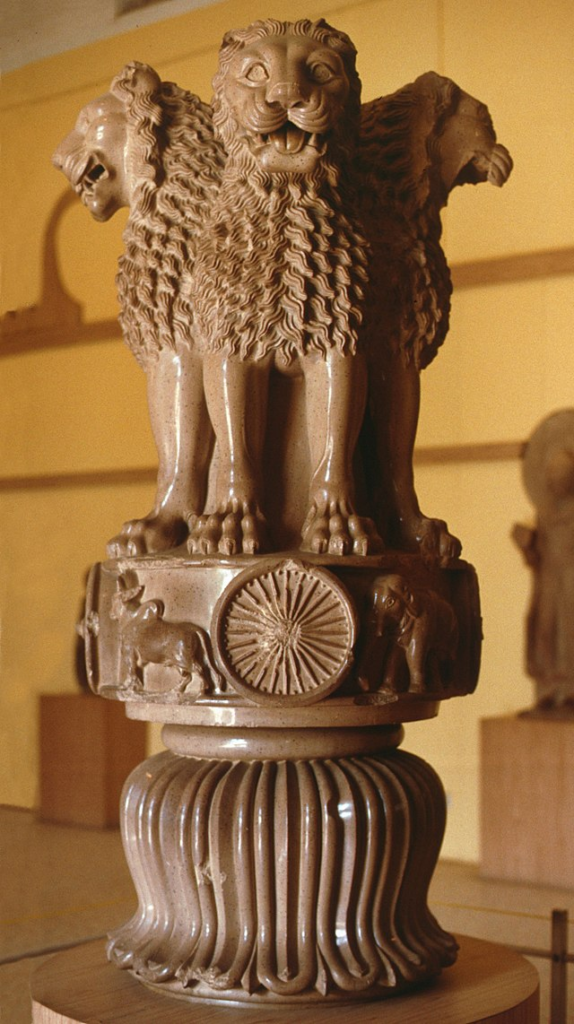
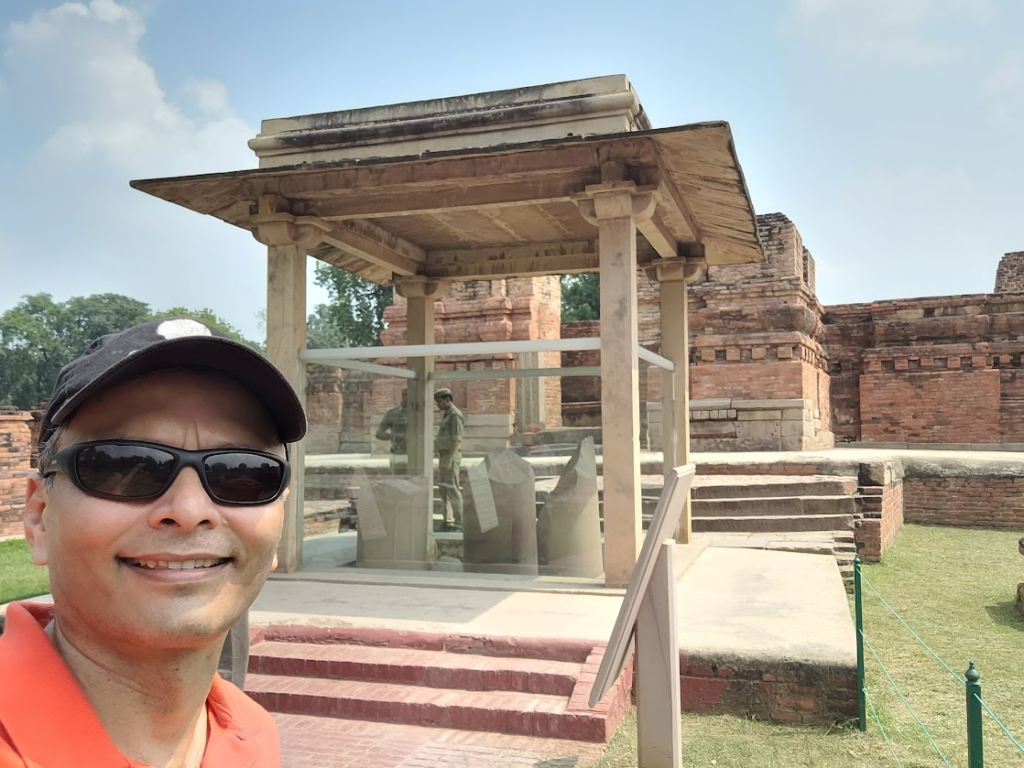
We finished Sarnath around 1 pm. We ate some delicious kakdi. Anu bought some small purses.
We had lunch at some non descript place. After that in the afternoon around we went to Durga Kund (water tank) and a red color Durga temple.
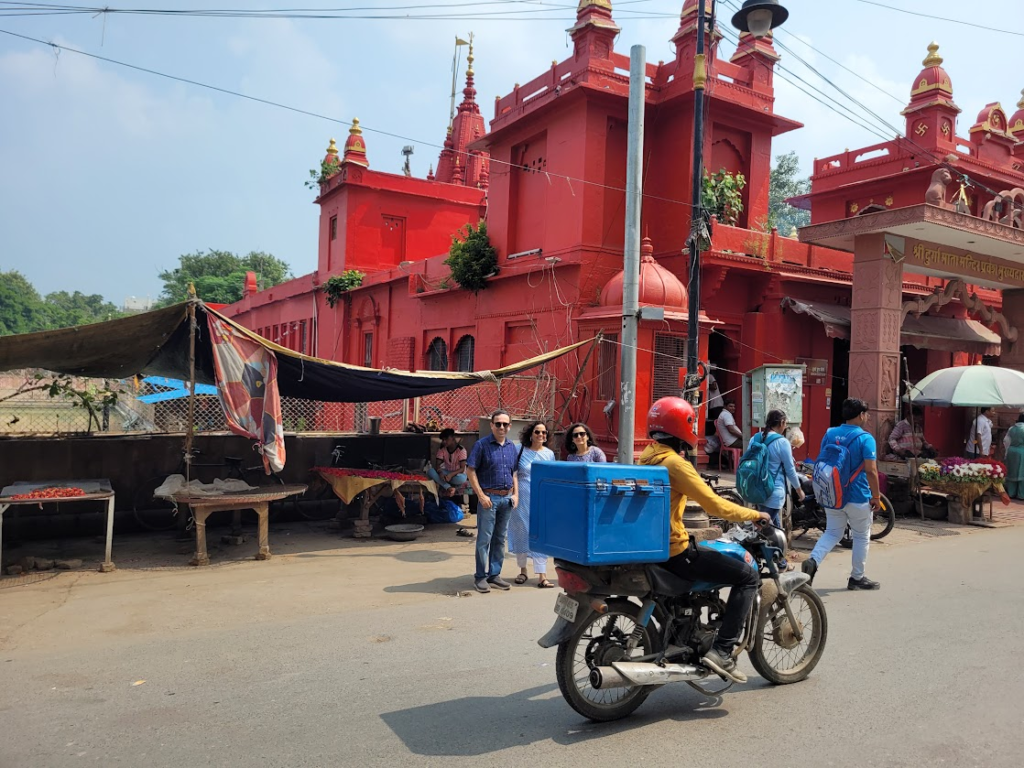
We also went to the Hanuman Sankat Mochan Mandir. The temple was established by famous Hindu preacher and poet saint Sri Goswami Tulsidas in the early 16th century. In the temple, offerings to Lord Hanuman (called Prasad) are sold like the special sweet “besan ke ladoo”, which the devotees relish; the idol is also decked with a pleasant marigold flower garland as well. This temple has the unique distinction of having Lord Hanuman facing his Lord, Rama, whom he worshipped with steadfast and selfless devotion.

Banaras Hindu University (now IIT BHU) founded in 1916 by Madan Mohan Malaviya is close by. But we did not go there.
After visiting the mandir, we went shopping for some Banarasi Sadi. We had some Pehelwan lassi, a famous shop in Banaras.

Our next stop was the Kashi Vishwanath Temple, a famous Hindu temple dedicated to Shiva. The temple is one of the most sacred Hindu pilgrimage sites and is among the twelve Jyotirlinga, shrines which are said to be the most sacred abodes of Shiva. We could not take many photos inside the temple.
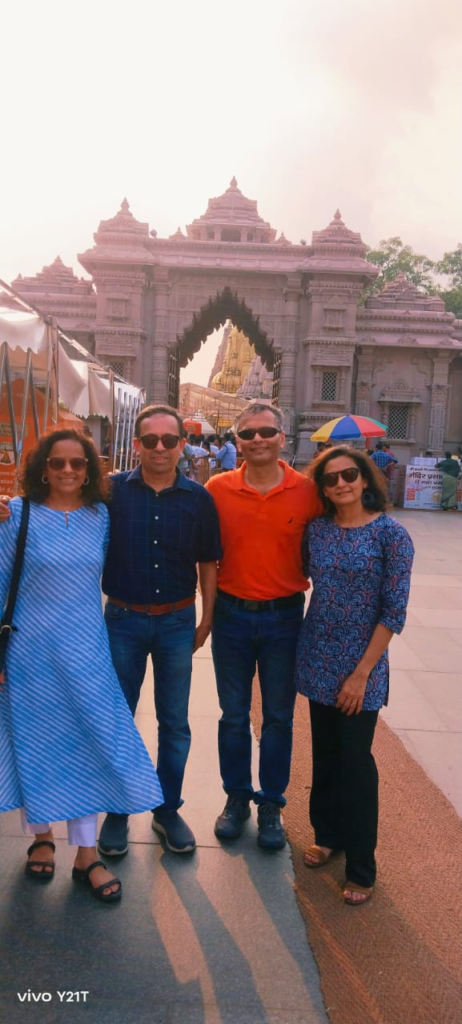
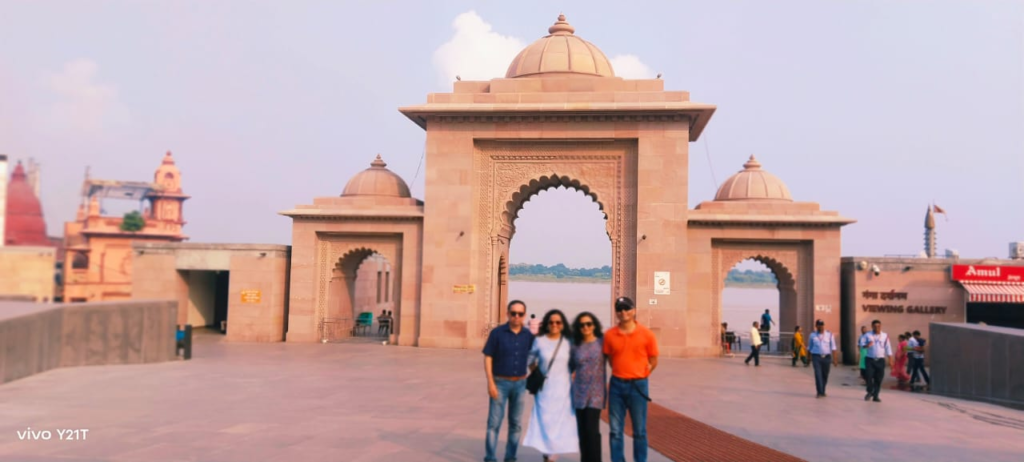
Gyanvapi Mosque is immediately next to the Kashi Vishwanath Mandir. It was constructed by Aurangzeb in 1669 allegedly upon demolition of an older Shiva temple. It is a very controversial site. Entrance to the mosque is strictly controlled because it is a religious boiling point.
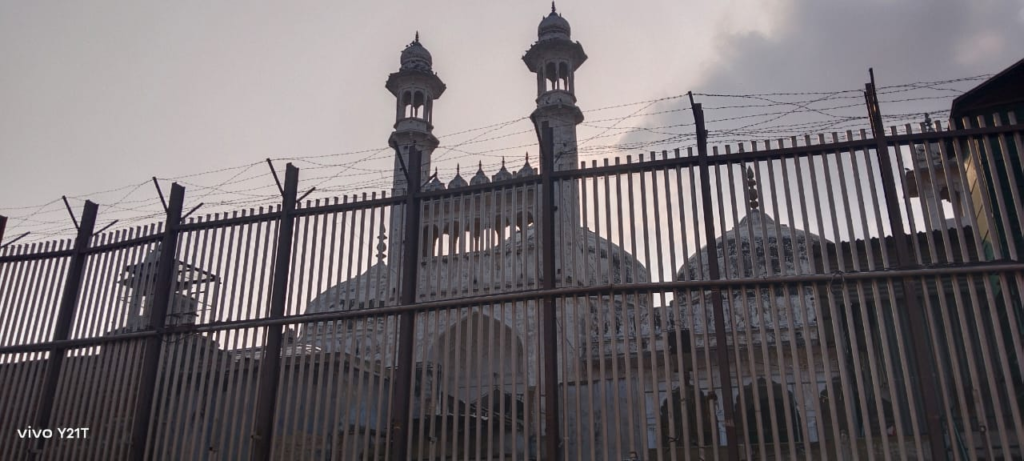
We were planning to see the Ganga arti in the evening. But prior to that we visited Kashi Chat Bhandar where we had every item they had on the menu. Aloo tikki chat, tamatar chat, chura matar chat.


We finished with some Paan.
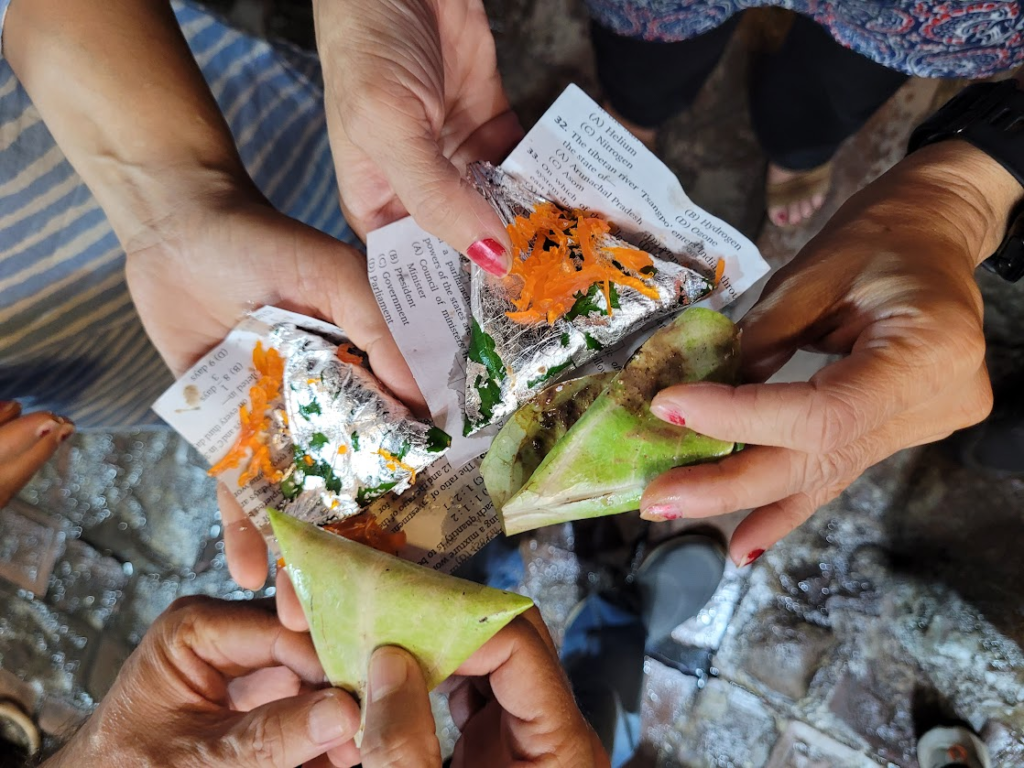
We ended the day by visiting the Ganga Arti at Dashashwamedh ghat. The arti was very crowded. For Rs. 300 per person, we were ferried to a stationary boat from which we could see the 1 hour arti. I personally thought that Rishikesh Ganga Arti was much better.
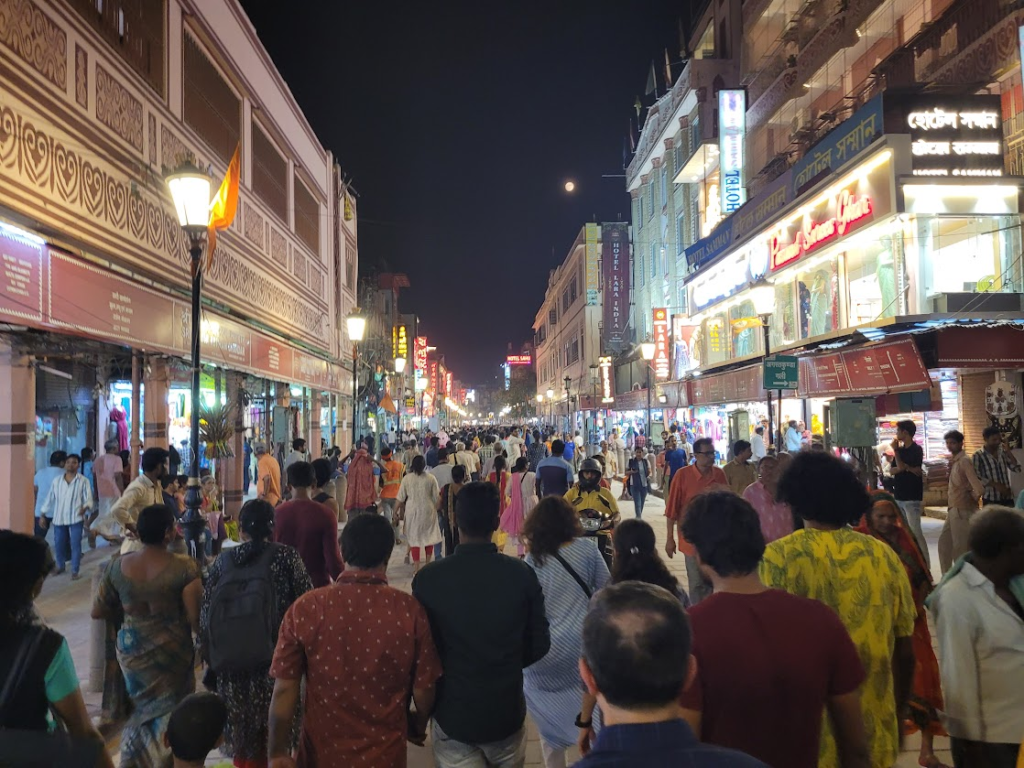
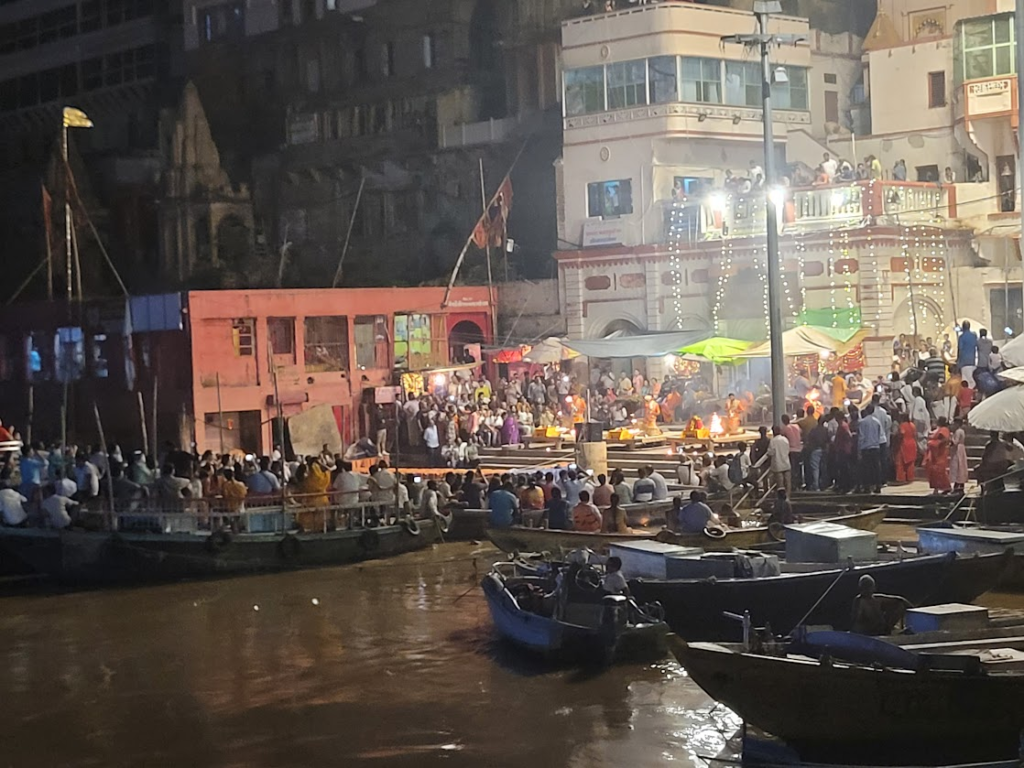
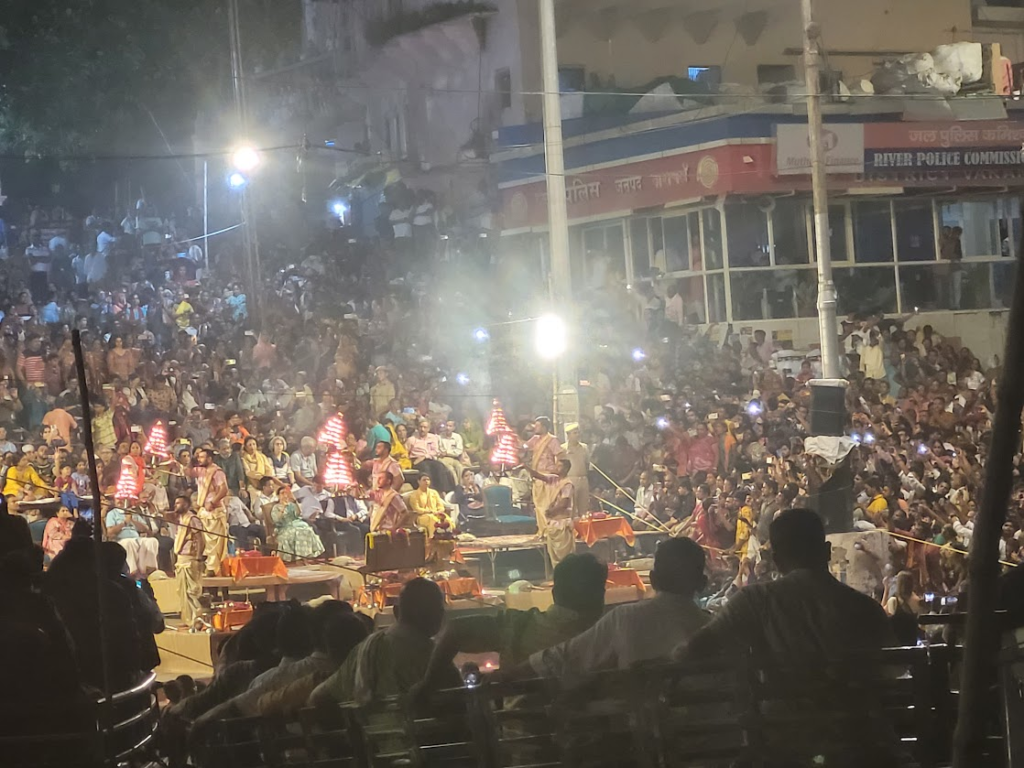
We came back to the Radisson by 9.05 pm.
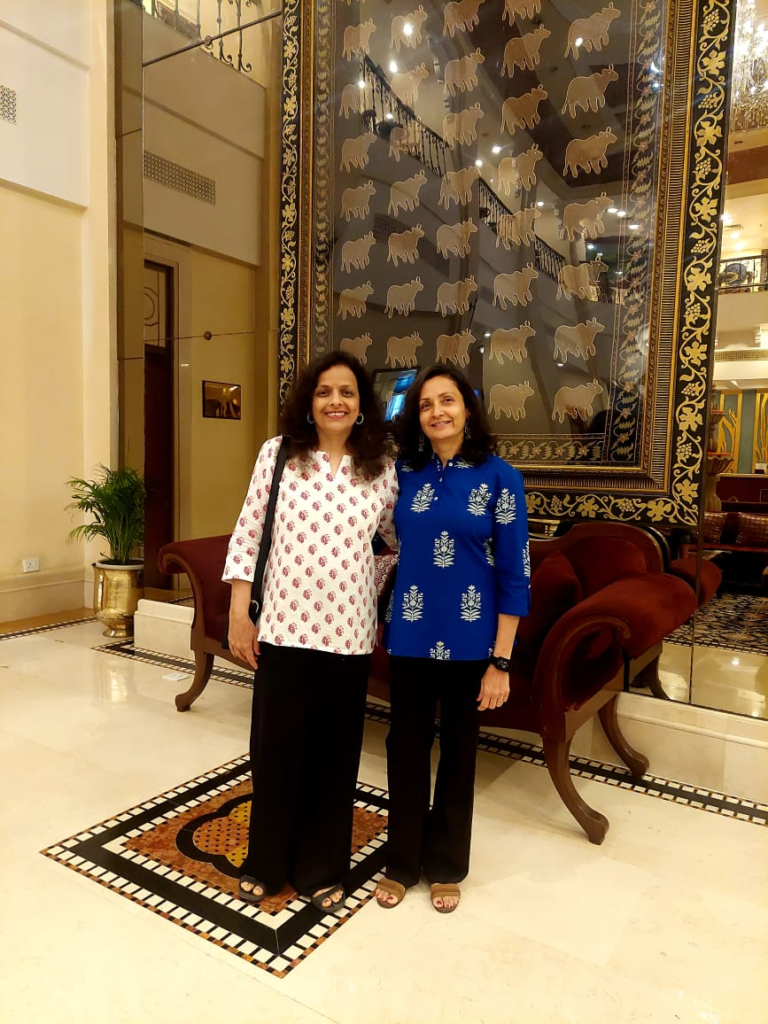
Fri, Sep 29: Prayagraj (Allahabad)
We started our day by leaving for Prayagraj at 8 am from Radisson hotel in Banaras. We reached Prayagraj around 10.30 am.
We went straight to the famous Triveni Sangam, where Ganga, Yamuna and Saraswati meet. We were taken in a boat to the Sangam. I got onto a platform where I took a dip in the Sangam. We collected some Gangajal.
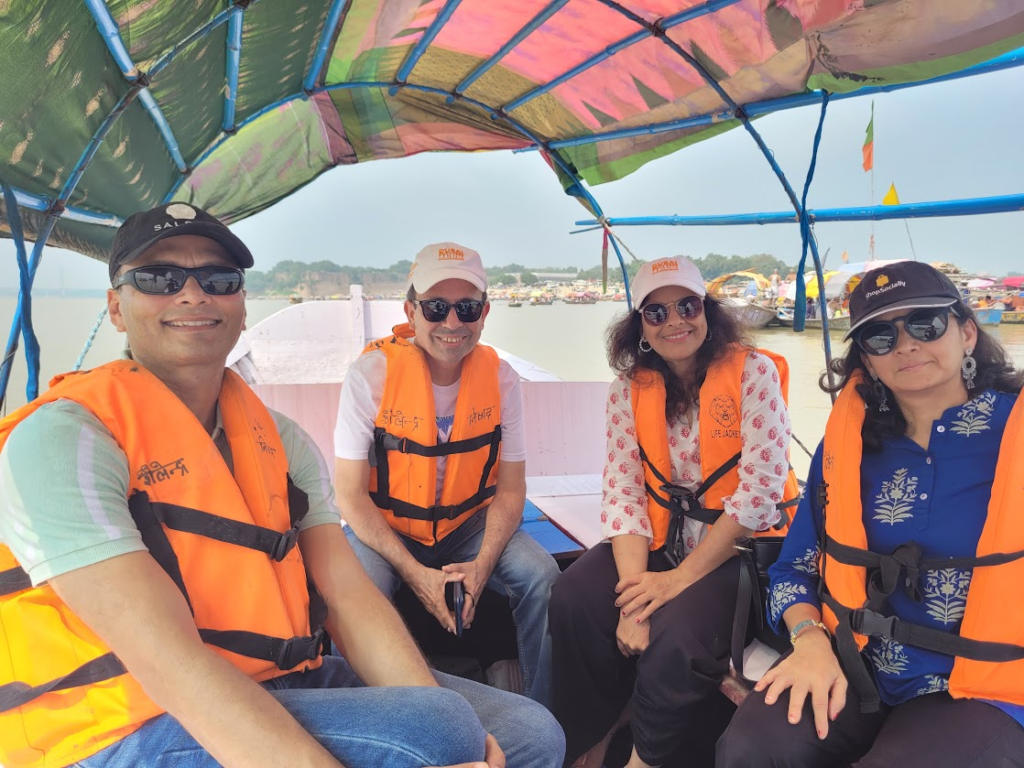
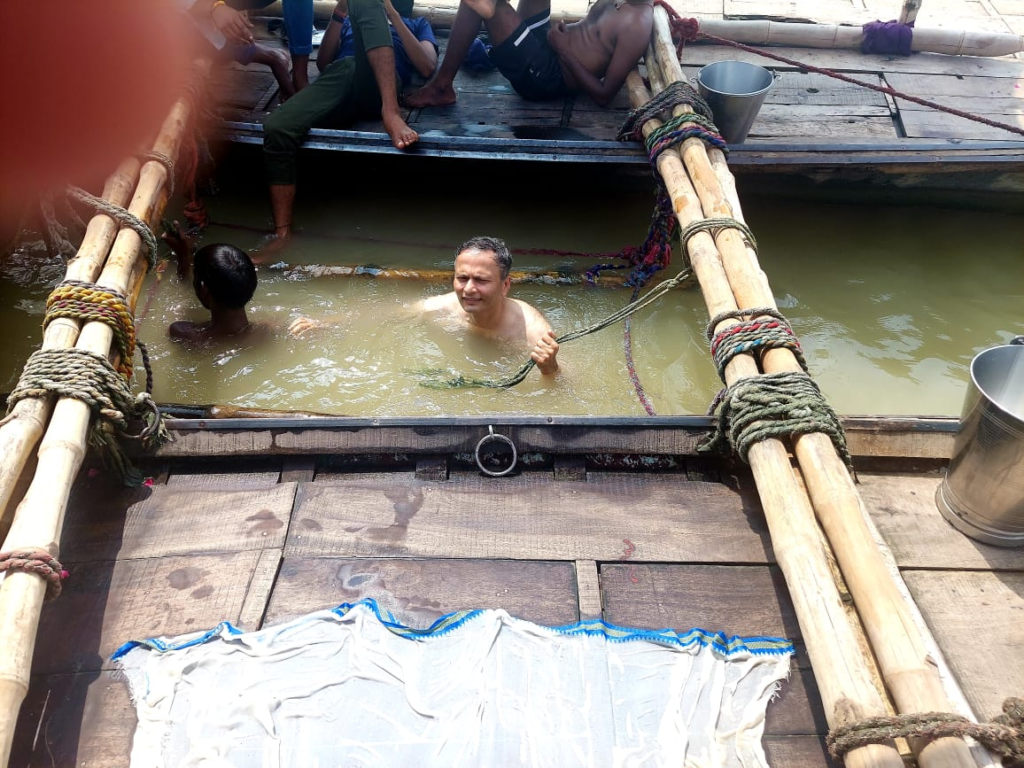
We visited the nearby Akbar fort and Bade Hanuman Temple.
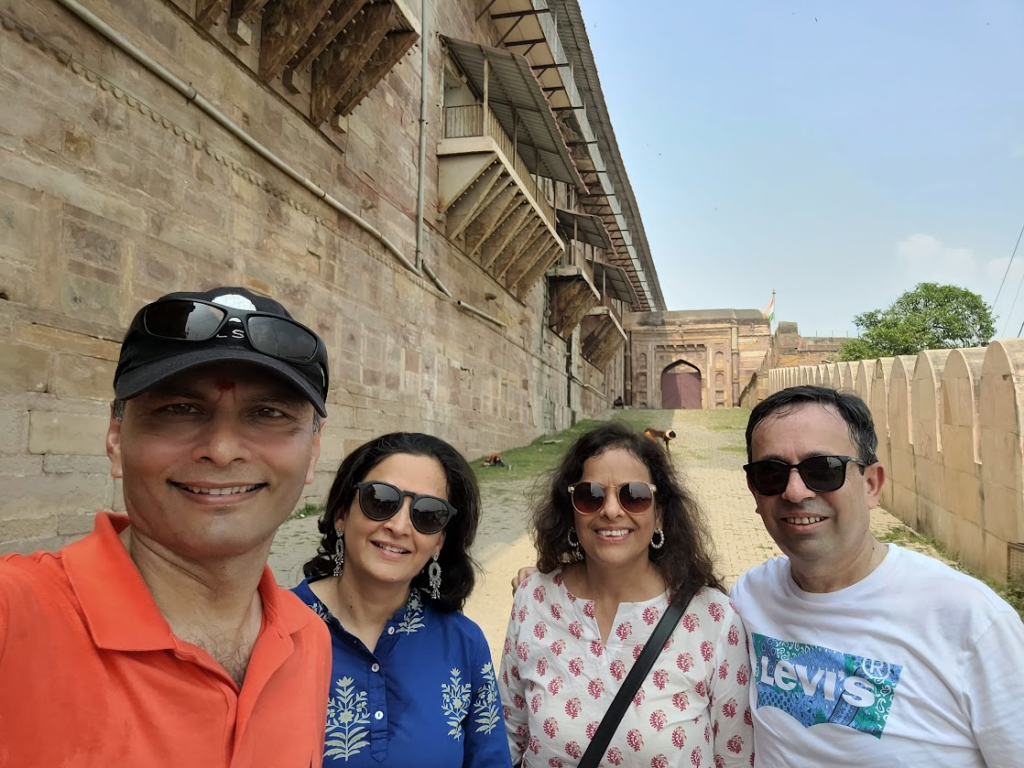
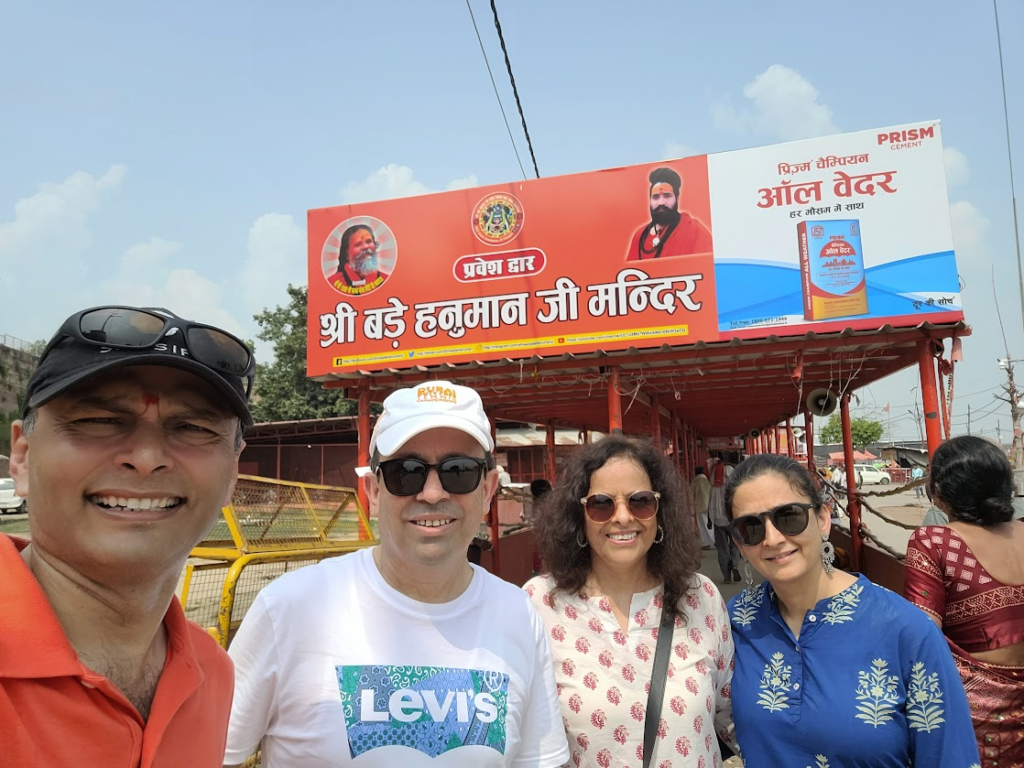

We had lunch at a restaurant that we chanced upon opposite Anand Bhawan. We had Bati Chokha. The food was amazingly simple, healthy and delicious.

We then proceeded to Anand Bhawan, the place where Jawaharlal Nehru grew up. Nearby was Swaraj Bhawan where Indira Gandhi was born. Swaraj Bhawan became the headquarters of the Indian National Congress. Many important decisions that affected the fate of India and its independence were taken in this location.
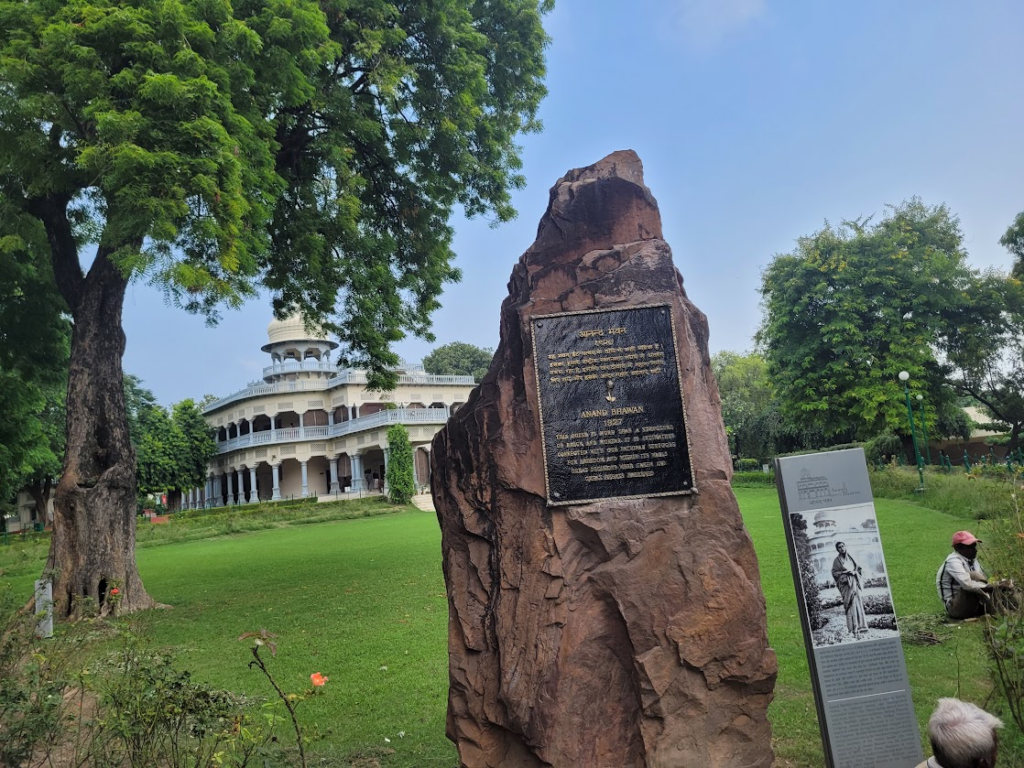
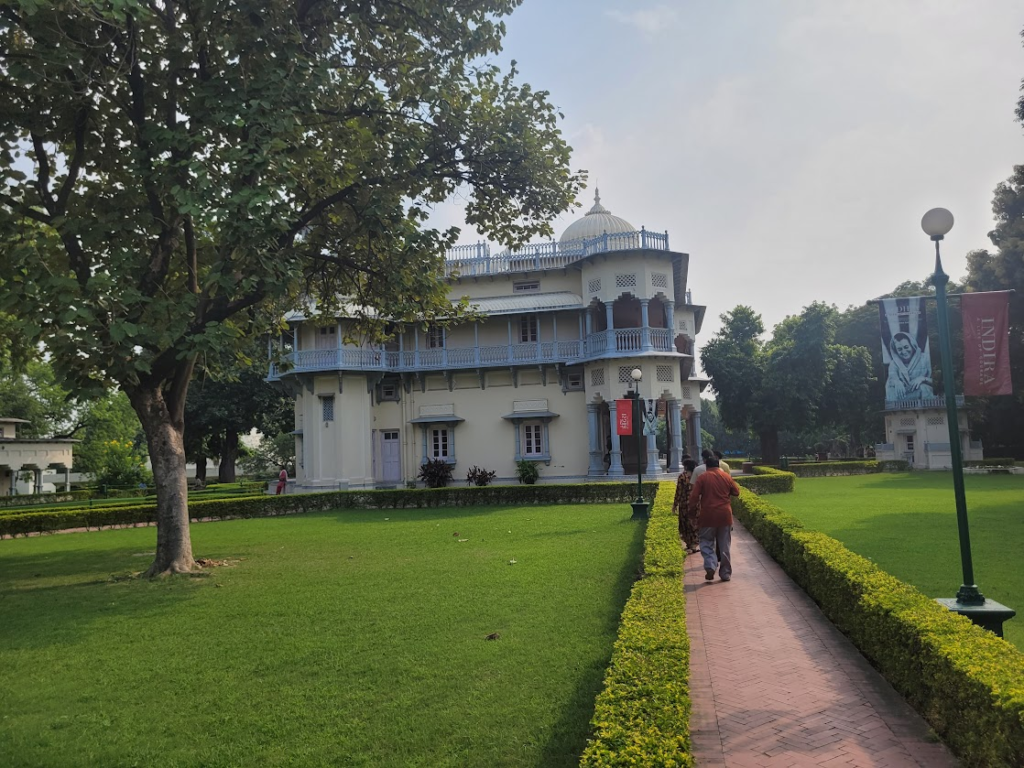
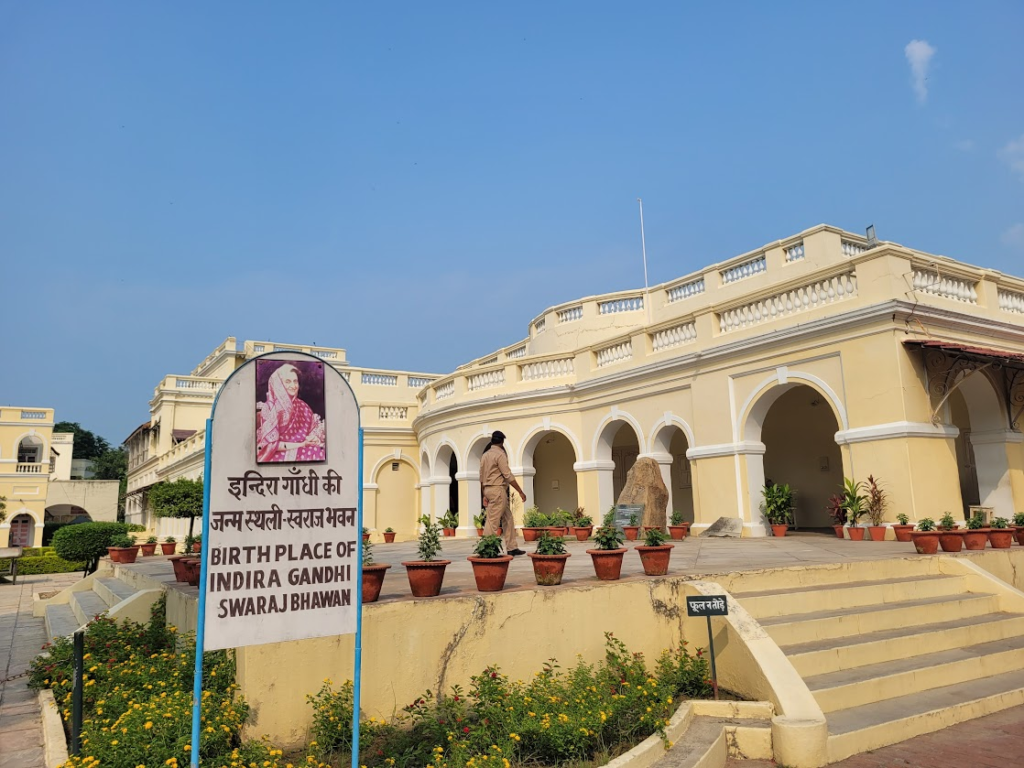
While others retired to the hotel, I visited Chandrashekhar Azad park (formerly Alfred Park) where Azad was surrounded by British Police in a gunfight and took his life with his own gun.


I also visited the Allahabad Museum. It was very good. It was particularly interesting because it had a lot of exhibits related to some of the independence movements (some violent) other than the generally accepted non-violence movement by Congress and Mahatma Gandhi. It was a new perspective to the history of Indian Independence.
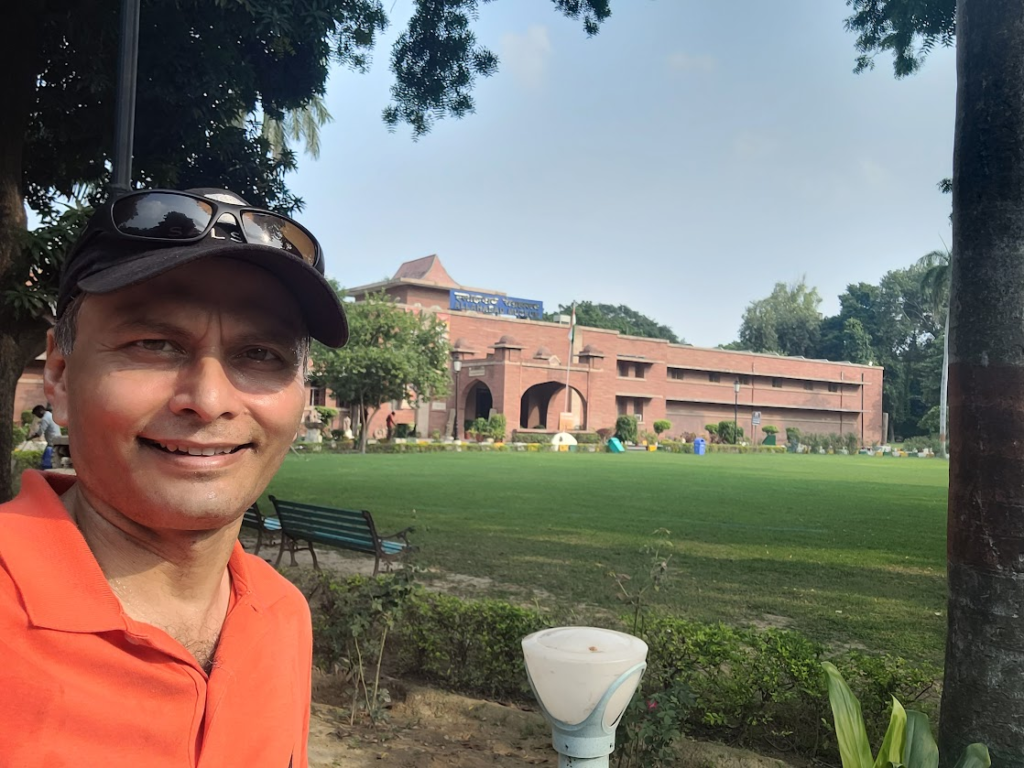
We ended the day early. Visited Puneet Tandon, my classmate from IITK Kanpur 1990. We stopped in front of the Allahabad High Court on the way to his home. In 1975, Allahabad High Court disqualified Ms. Indira Gandhi from contesting in elections. This led to the imposition of emergency in 1975.
The visit to Puneet’s place was a pleasure. His wife Shweta is a fantastic cook, especially a great baker.
Came back to the hotel around 9.15 pm, ready to go to Ayodhya the next day.
Sat, Sep 30: Ayodhya
We started at 4.30 am by train from Prayagraj to Ayodhya. The train was 2AC and quite comfortable.
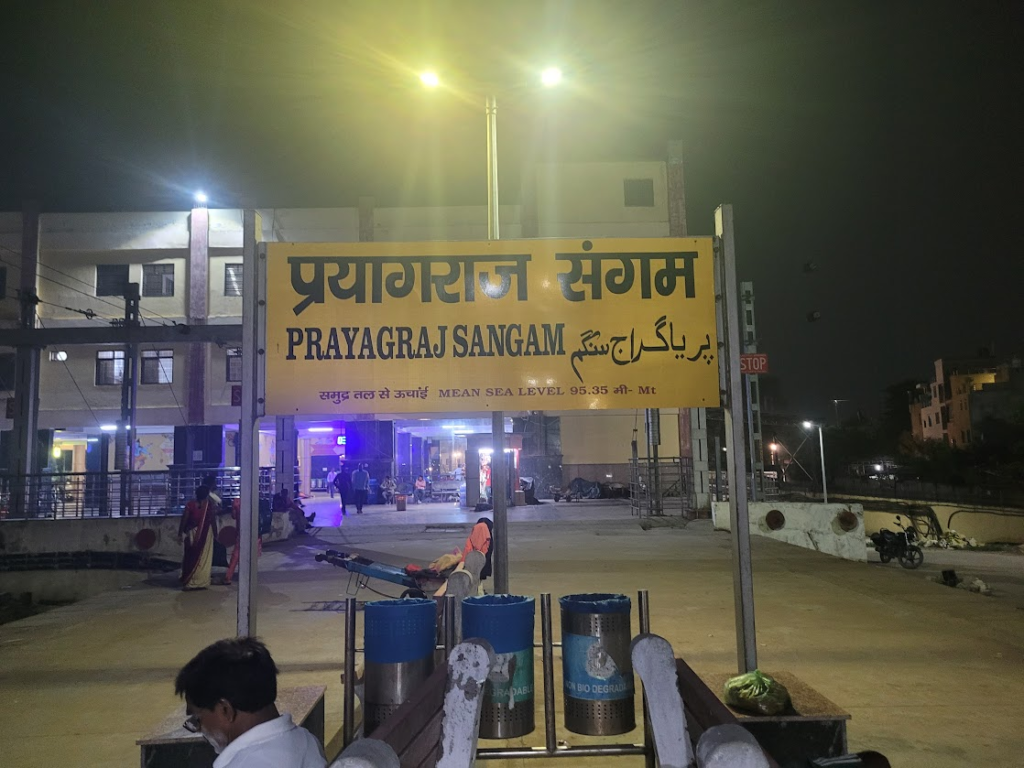
We reached Ayodhya Junction at 9.45 am. The station has been cleaned up significantly.

We directly went to Hotel Ramayan, where we had booked our rooms. That is only the 4-star hotel in Ayodhya, nothing better than that yet. A lot of new hotels are coming up for the inauguration of the Ram Mandir on Jan 22, 2024, but nothing is ready yet. We checked into the hotel and proceeded to visit Ayodhya. Ayodhya is a very small town. It got popular after the 1992 Ram Janmabhoomi Andolan. There is a lot of construction going on all over the town, getting ready for the Ram Janmabhoomi inauguration on Jan 22, 2024.
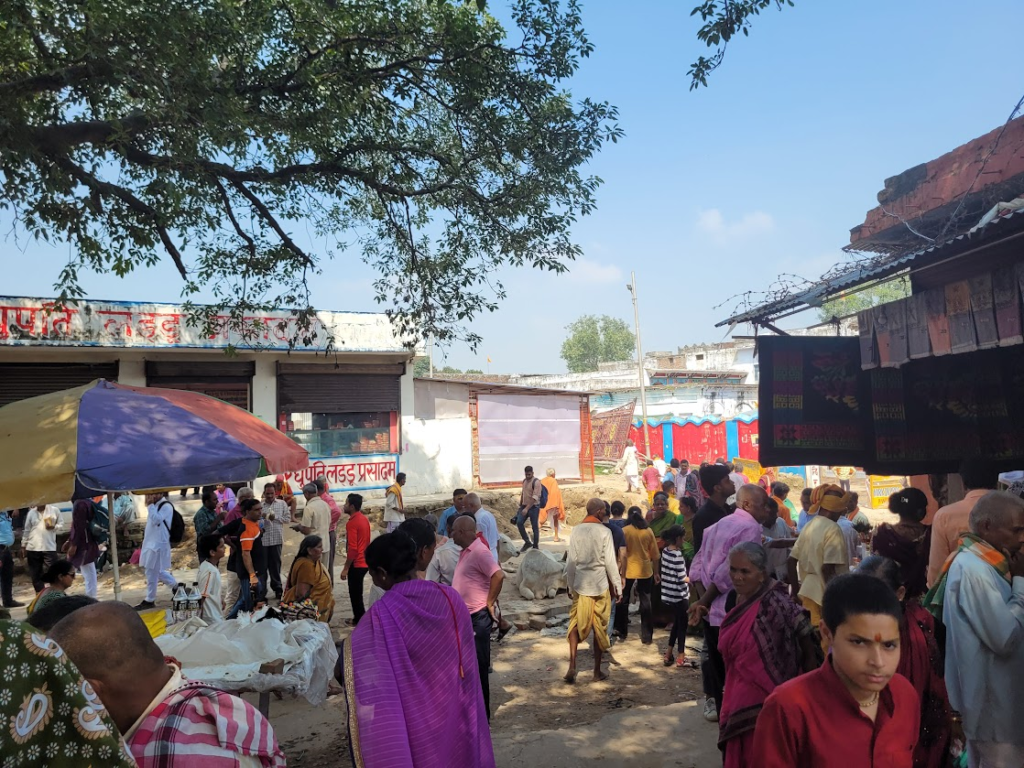

We started by visiting the palace of Raja Dashrath.

Next we visited Kanak Bhawan (where Ram and Sita lived).
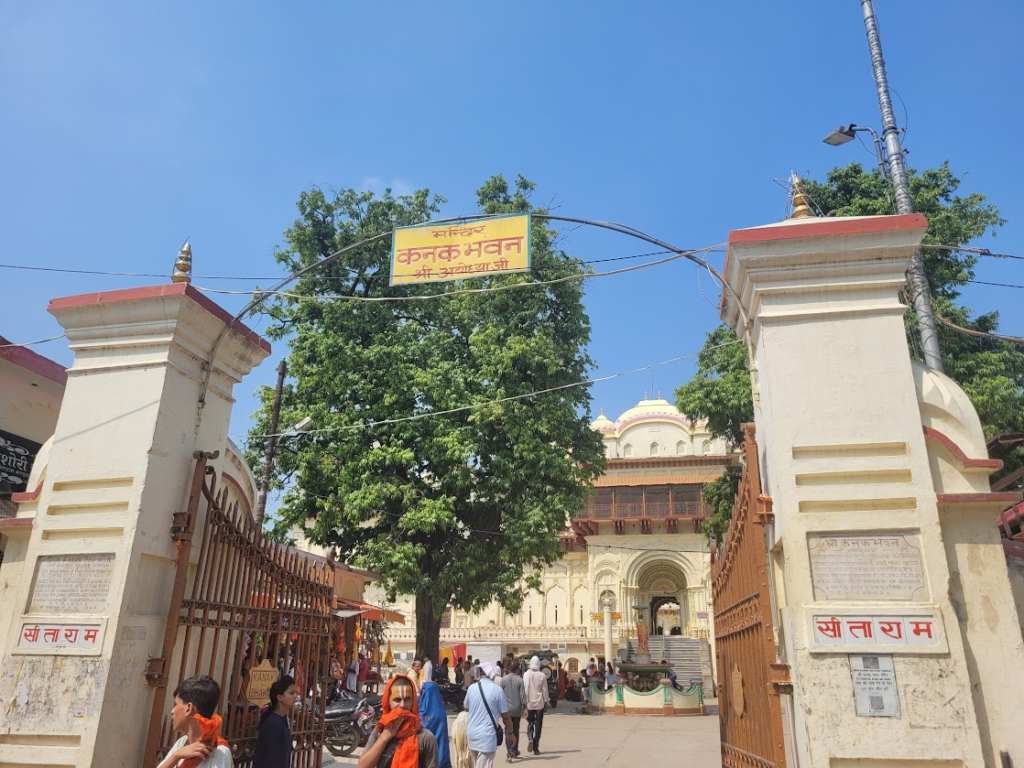
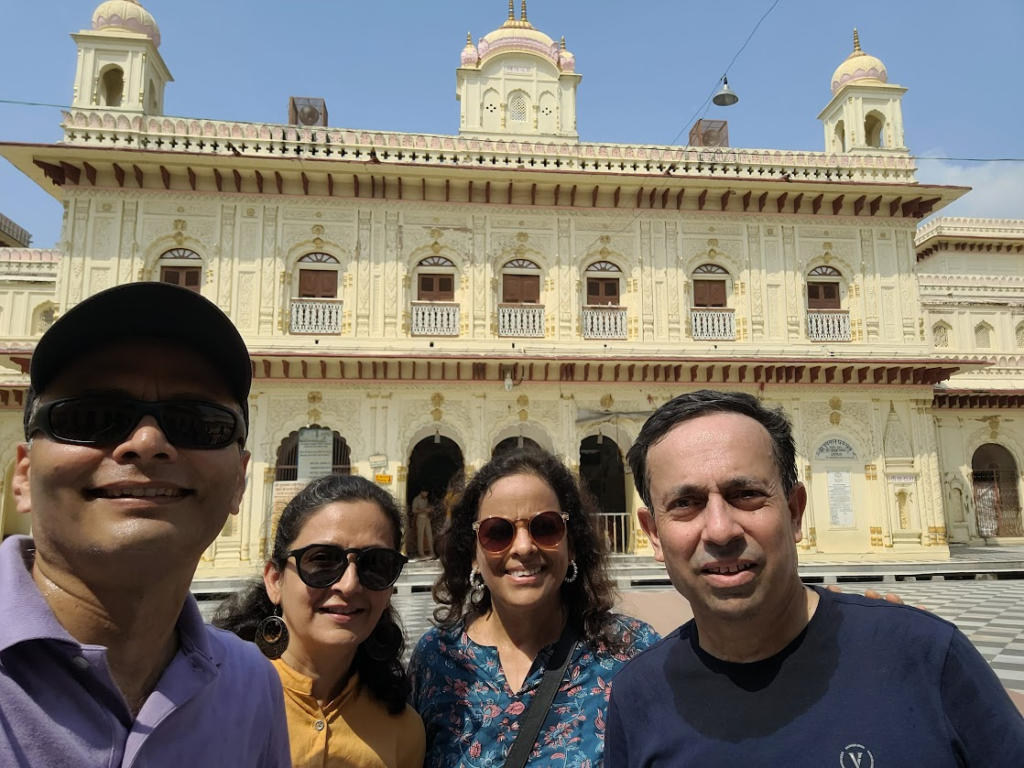
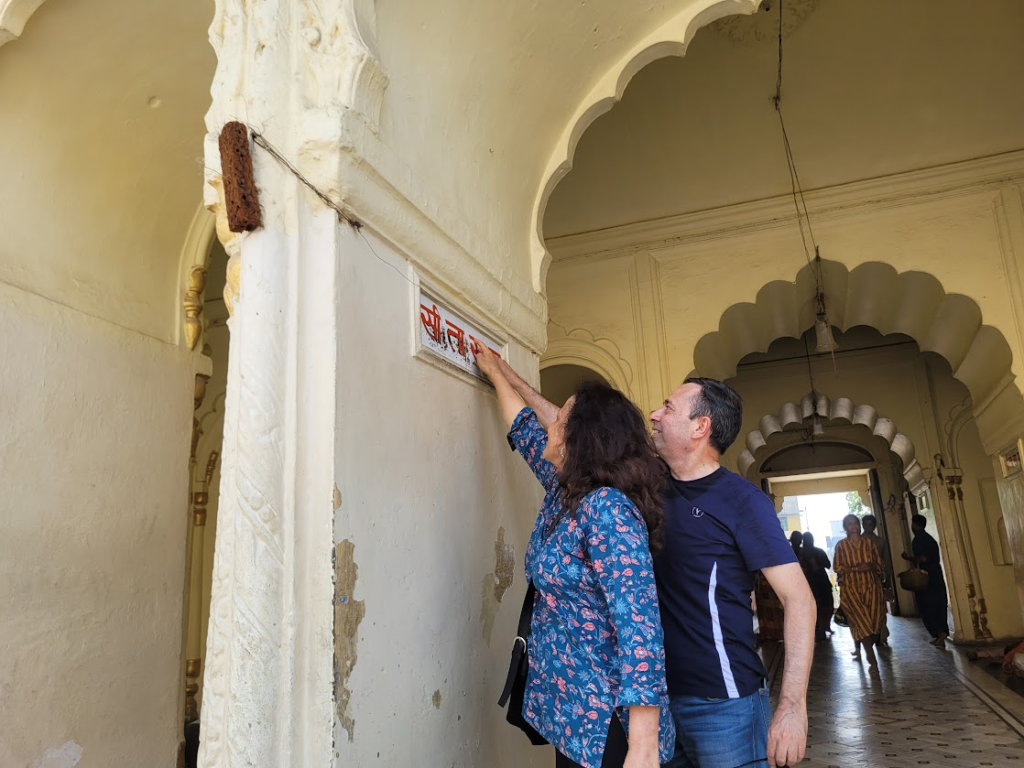
We climbed a lot of stairs to a tall temple called Hanuman Gadhi (temple of Hanuman).


We then walked around the Sharayu Nadi Ghat. This area has been cleaned up and developed. We got Shriram painted on the forehead for the experience. It was really hot at that time of the day.
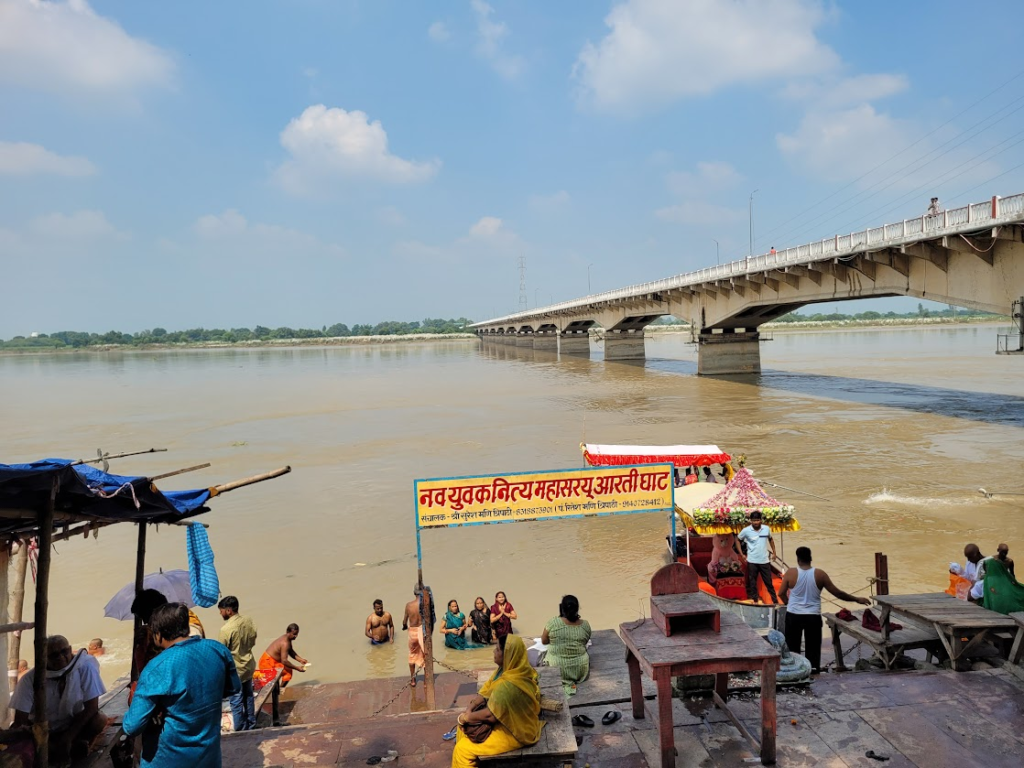
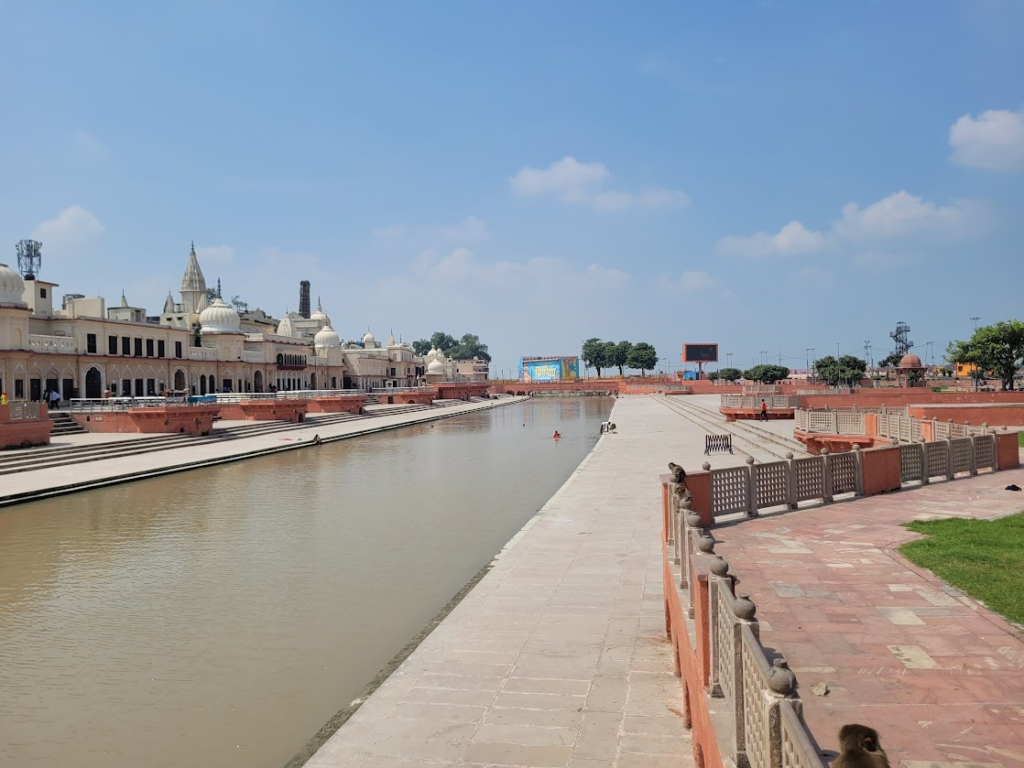
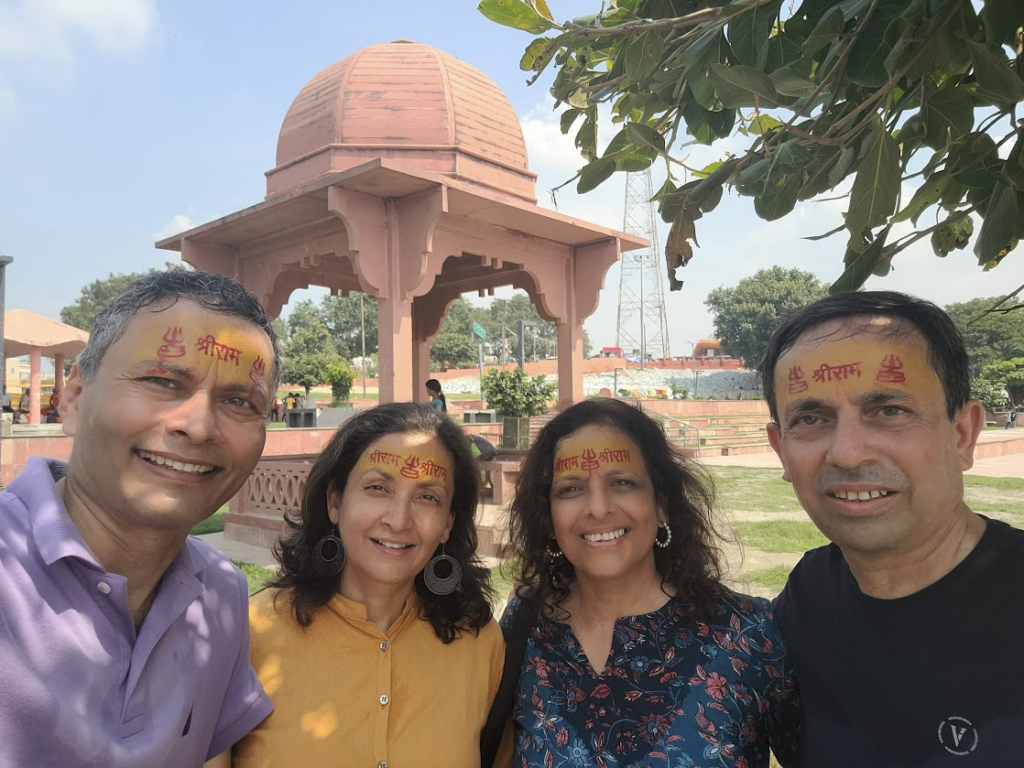
We finally visited Nageshwarnath Temple, a temple of Shiva.
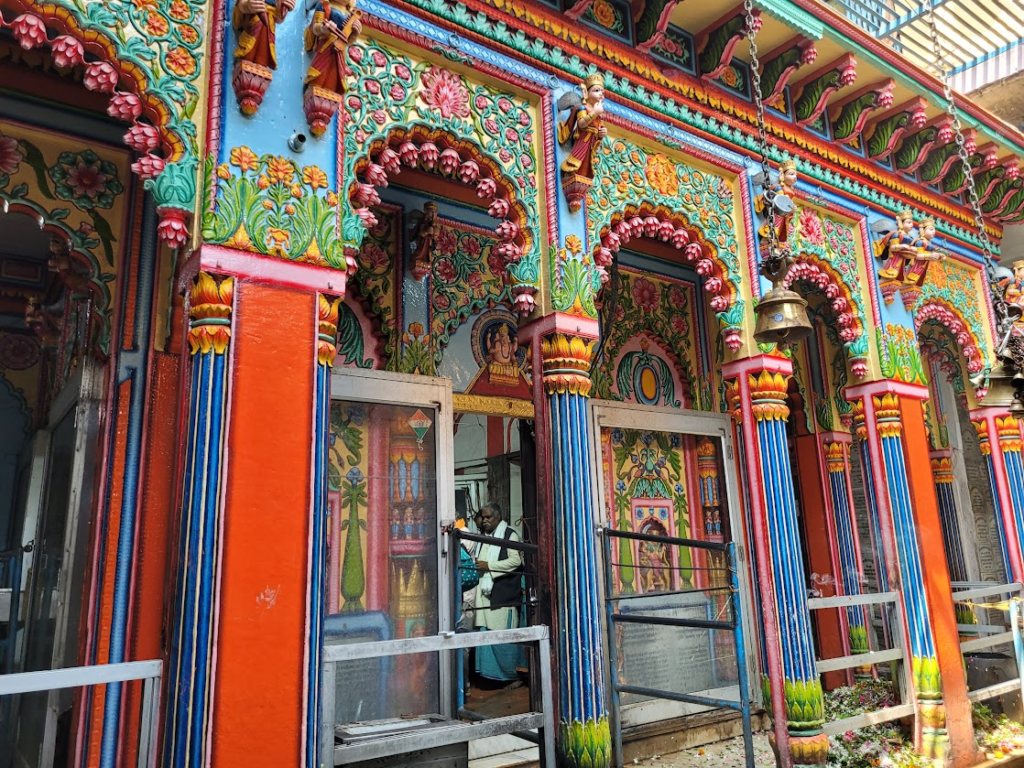
We came back to hotel at 12.15 pm, ate lunch at the hotel. Slept till 2.45 pm. Due to friend Deepak Kumar’s direction, the local forest officer’s team came to escort us. W left at 3 pm for Ram Janmabhoomi temple.
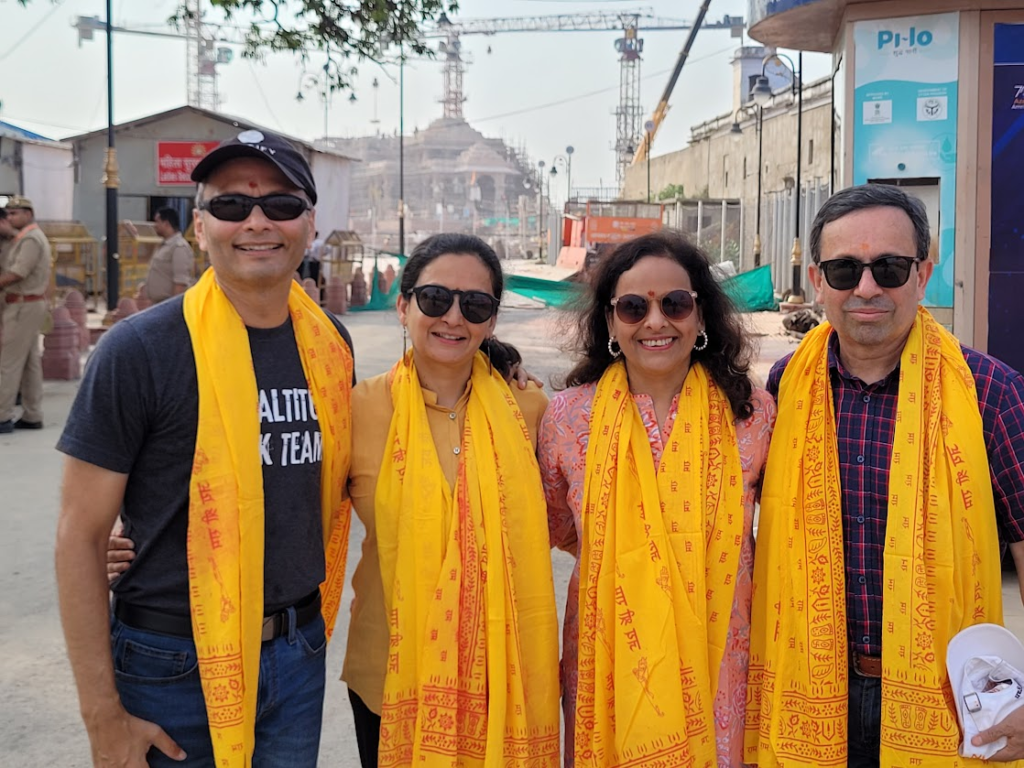
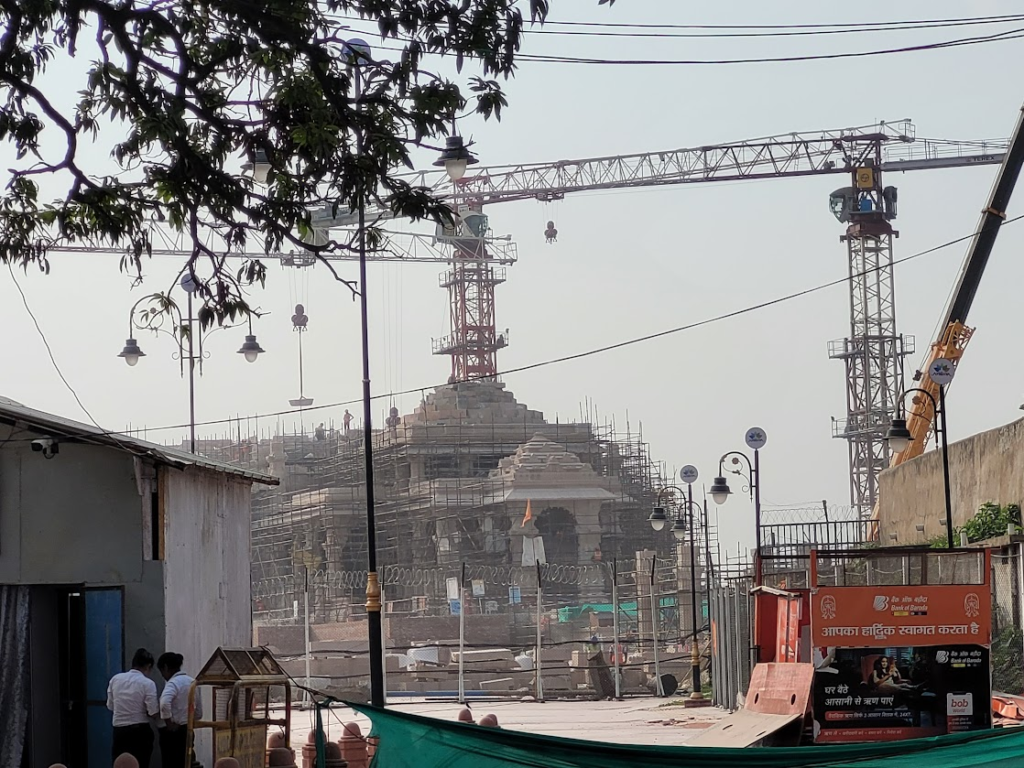
Due to the uniformed officers with us, we quickly finished darshan of Ram Lalla by 3.45 pm.
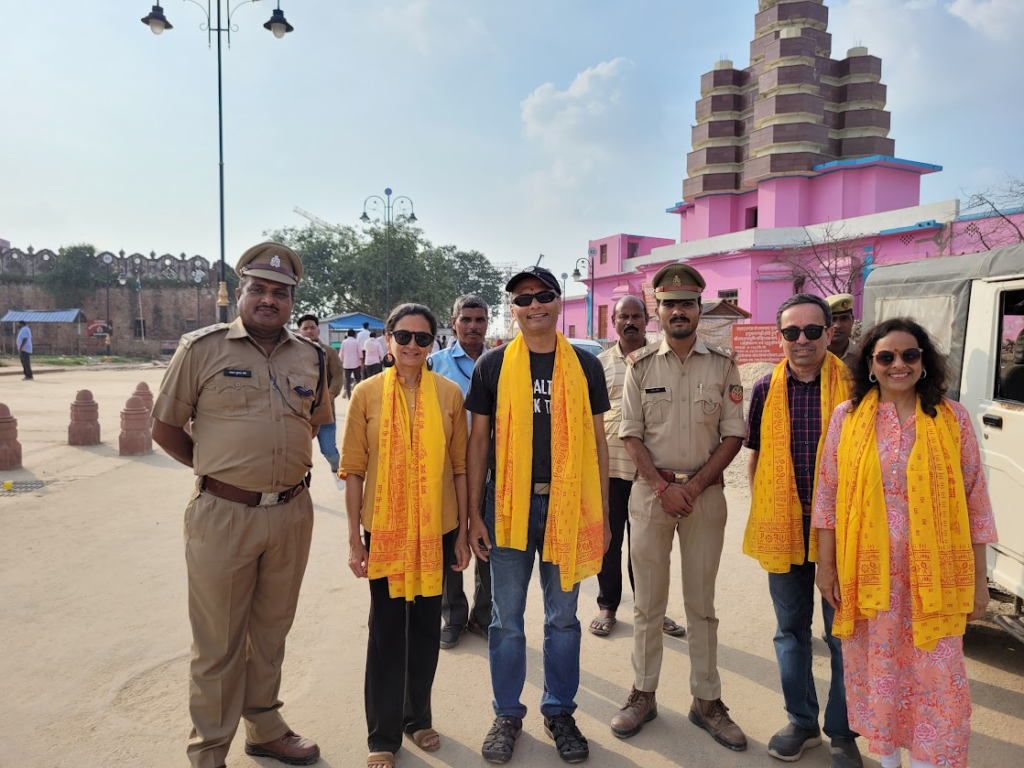
We proceed to visit Guptar Ghat on Sharayu river where Ram took Samadhi with a lot of citizens of Ayodhya. This ghat is about 10 km from Ayodhya city. The waterfront has been developed quite nicely.
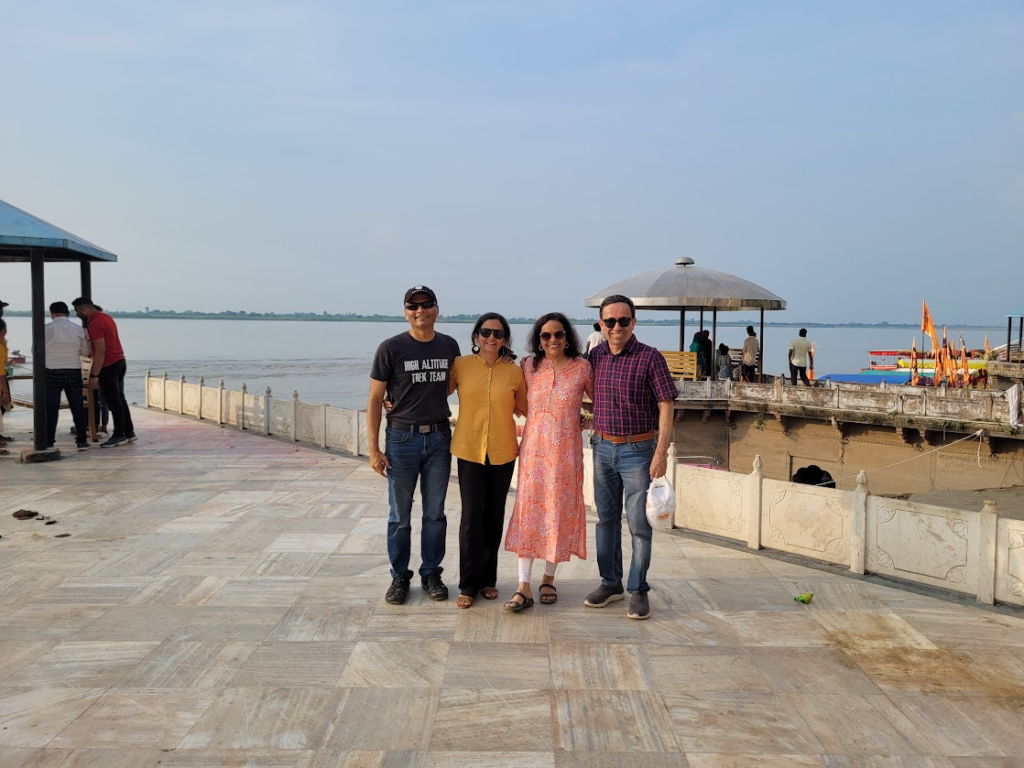
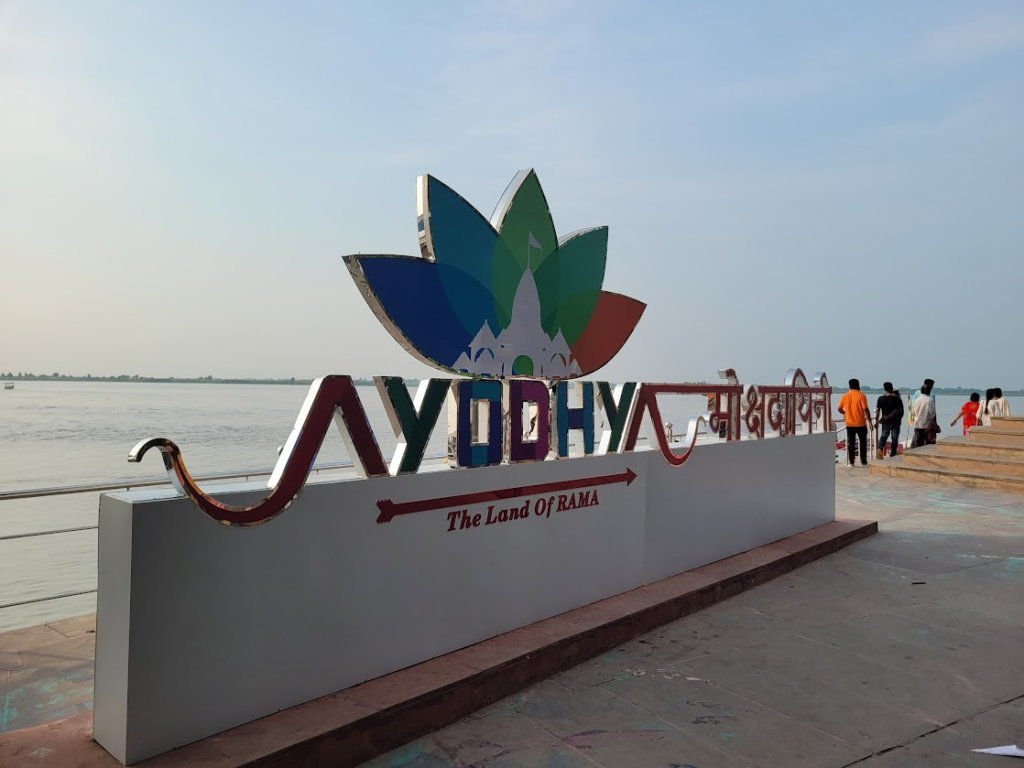
We were back in the hotel by 5.15 pm. We had coffee on the lawns.
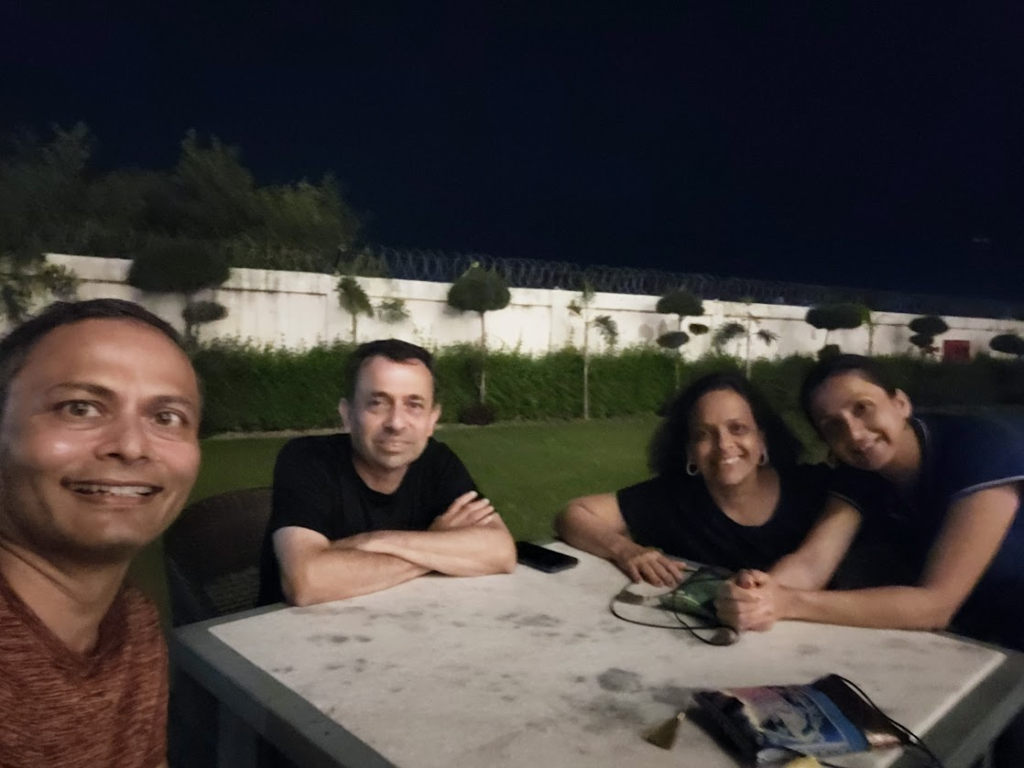
Ate dinner from 8 pm to 9 pm. Sat on lawns from 9 pm to 10 pm. Slept at around 10.30 pm. Great day in Ayodhya.
For those planning to visit the Ram Janmabhoomi temple, I would suggest visiting in Dec 2025. By then, the infrastructure will have been built up. Right now, no hotels and all dug up roads.
Oct 1: Lucknow
We took the 8 am Vande Bharat train in the morning from Ayodhya to Lucknow. The train was very comfortable. We turned the seats around and had a great journey.
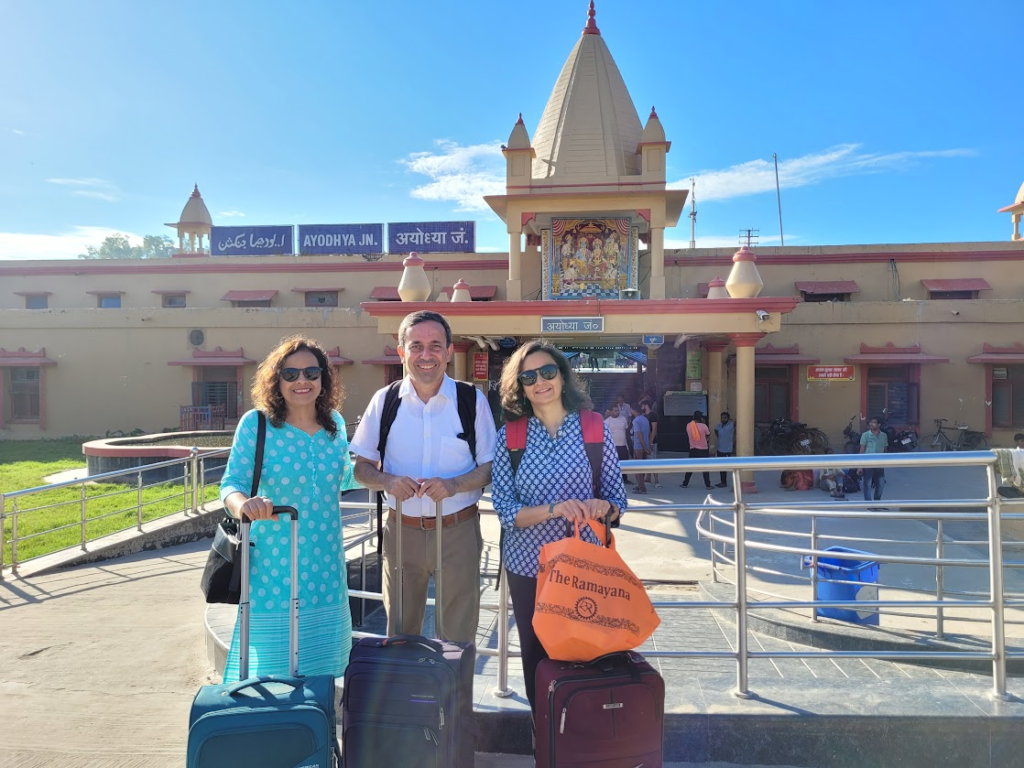
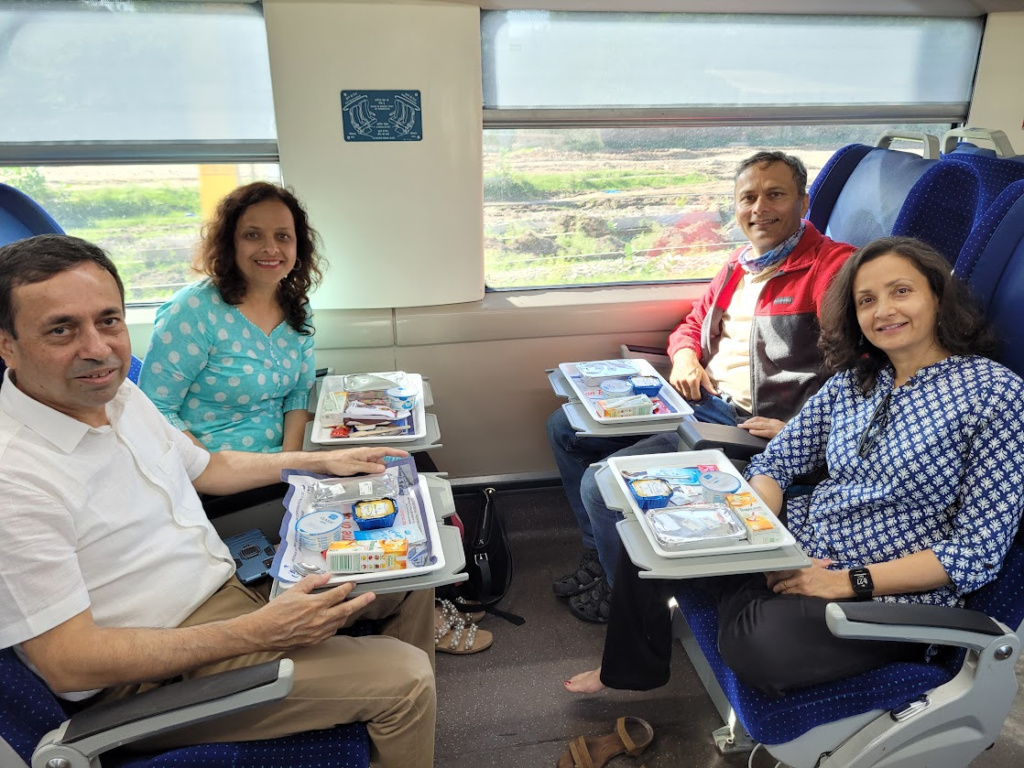
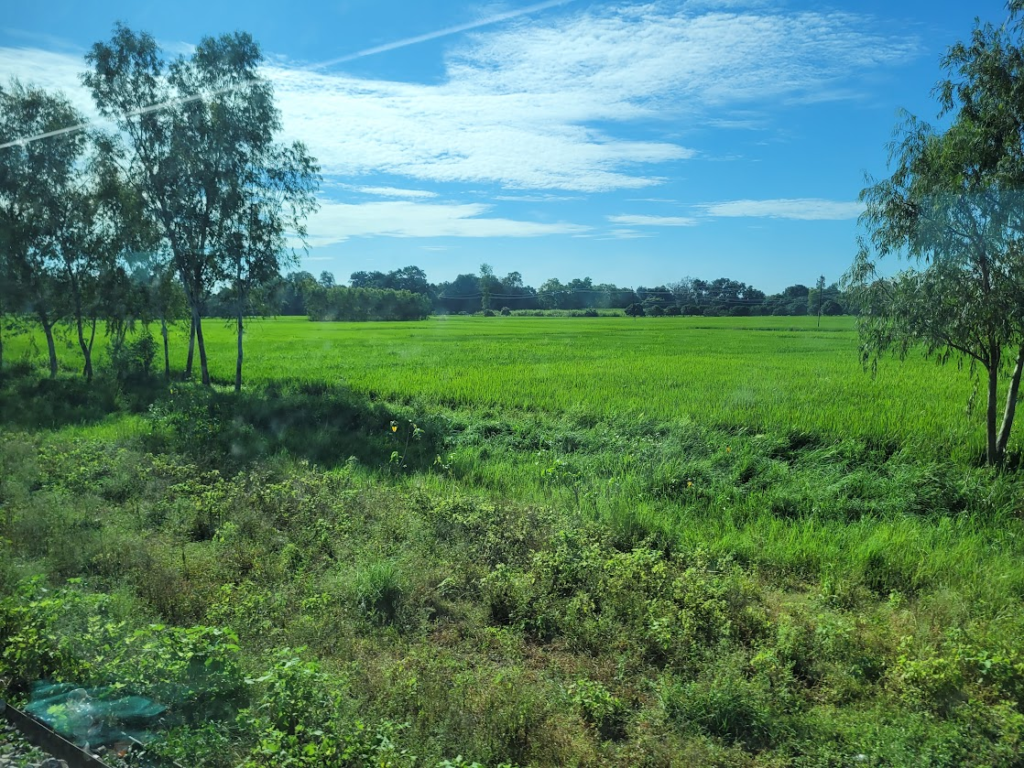
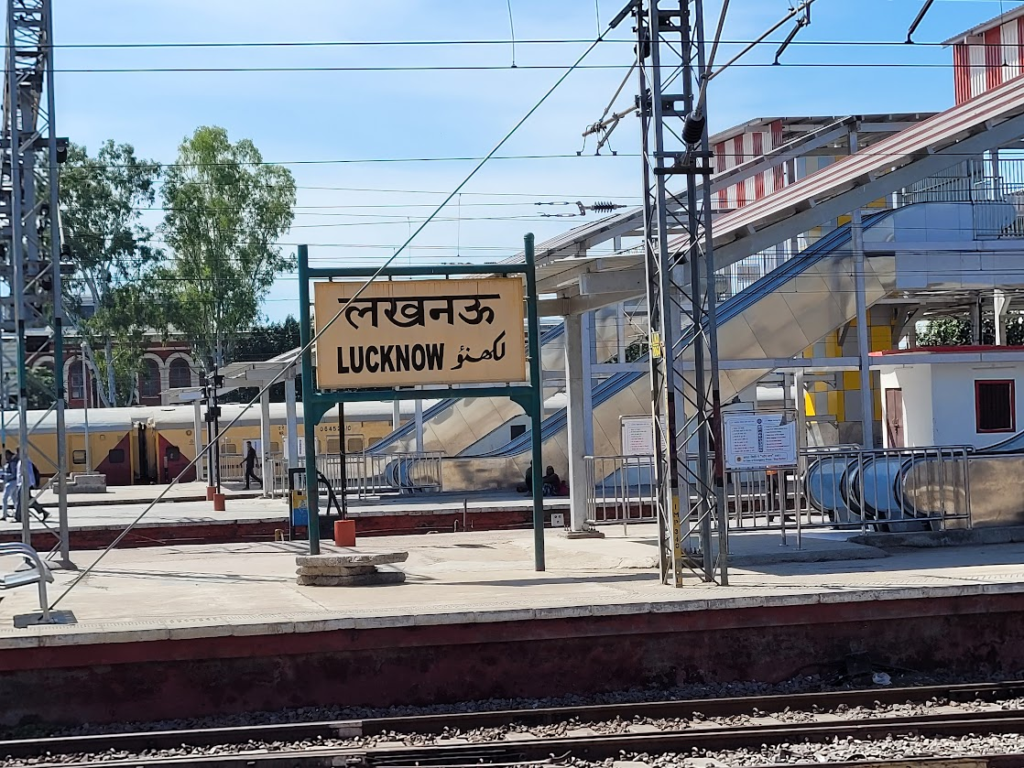
As soon as we got off at the railway station, we were picked up by Akram, my friend Deepak Kumar’s car driver. We went to Sadaf, a shop for Lucknow Chikankari. Chikan is a traditional embroidery style that is unique to Lucknow. There are Chikankari clothes shops all over Lucknow. We spent nearly 2 hours in that shop.
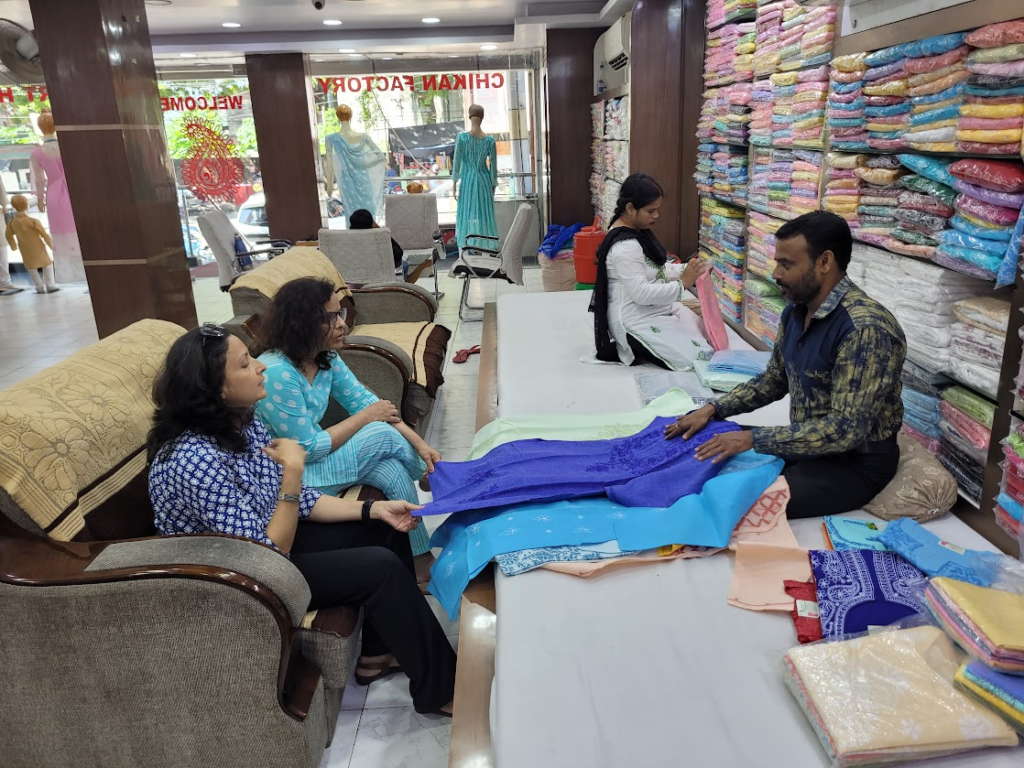
We proceeded to Royal Cafe, a generic sounding cafe in Hazratganj. However, the food turned out to be extremely good. Of course, Lucknow is better know for its non-vegetarian food, but the veg biryani was very good as well.

In the afternoon, we proceeded to Bada Imam Bada. It is a building complex in Lucknow, India built by Asaf-ud-Daula, Nawab of Awadh in 1784. An Imambada is a shrine built by Shia Muslims for the purpose of Azadari. The building complex also includes the large Asfi mosque, the Bhul-bhulaiya (the labyrinth), and a Bauli, a steep well with running water. Two imposing gateways lead to the main hall.
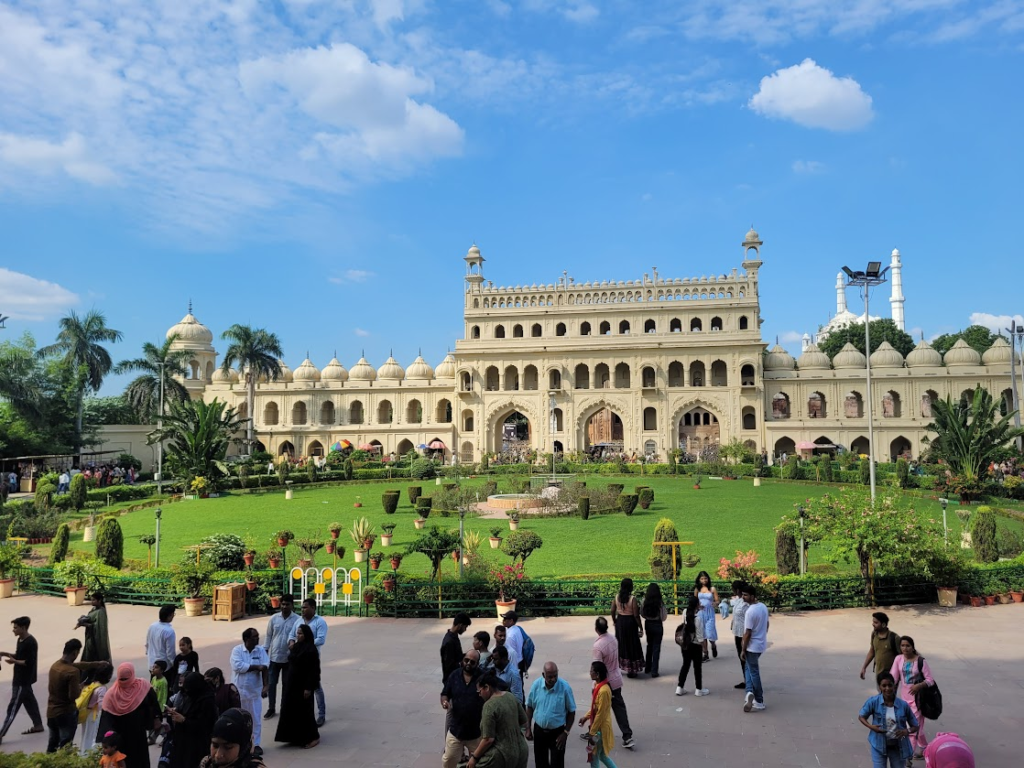
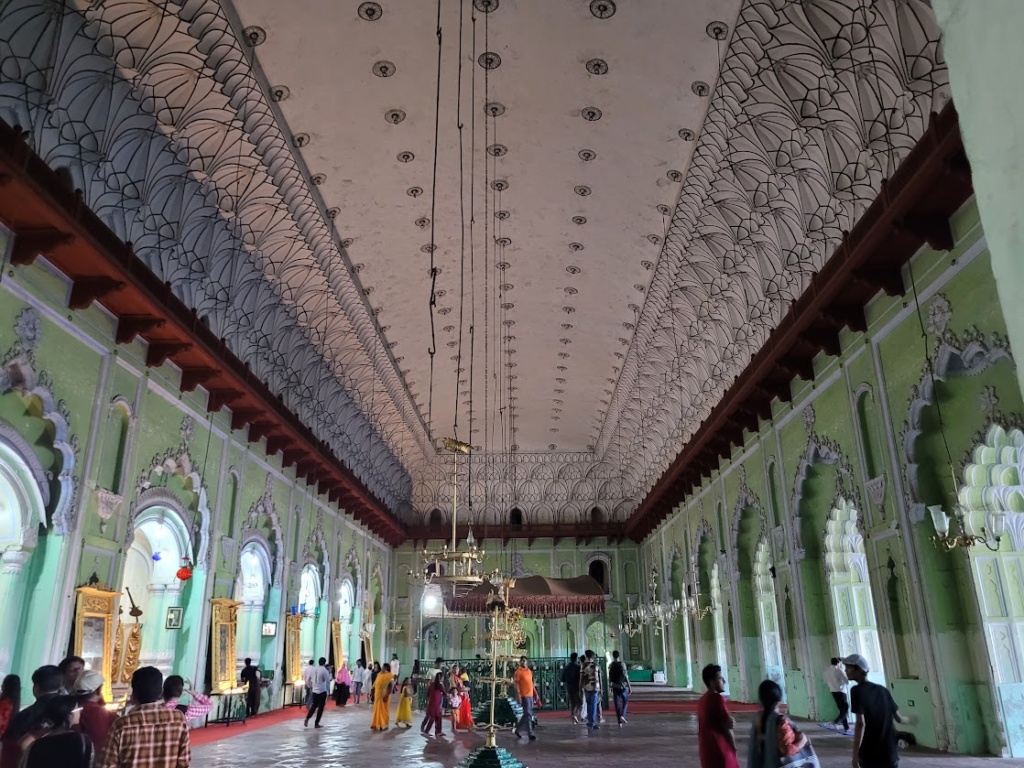
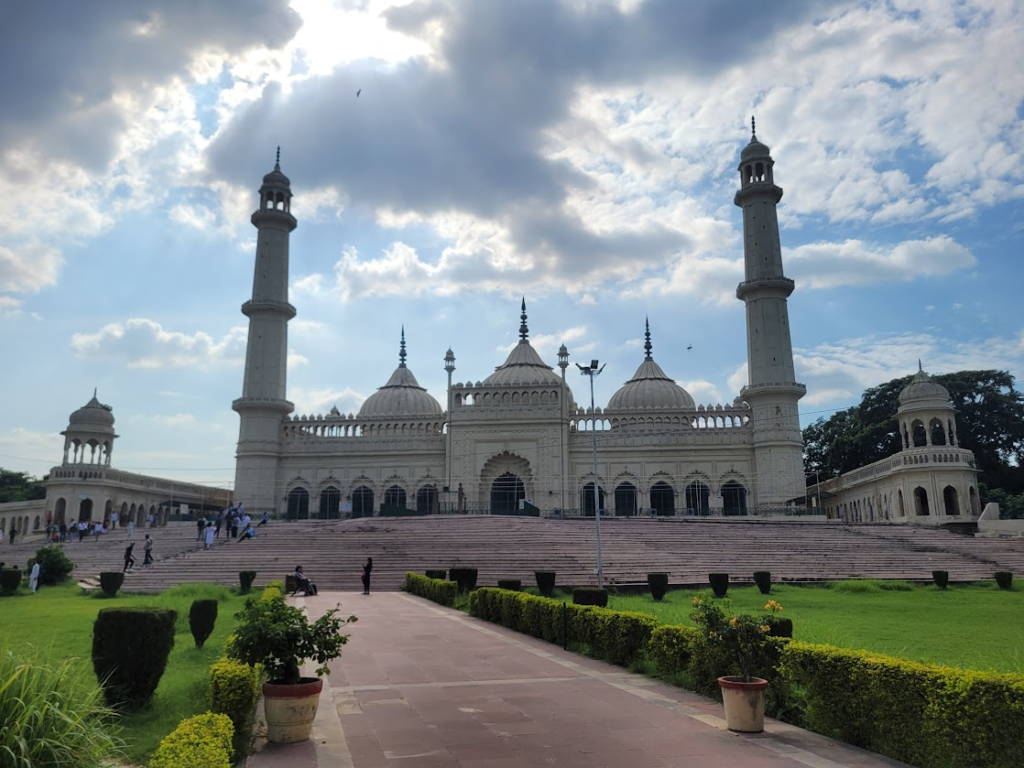
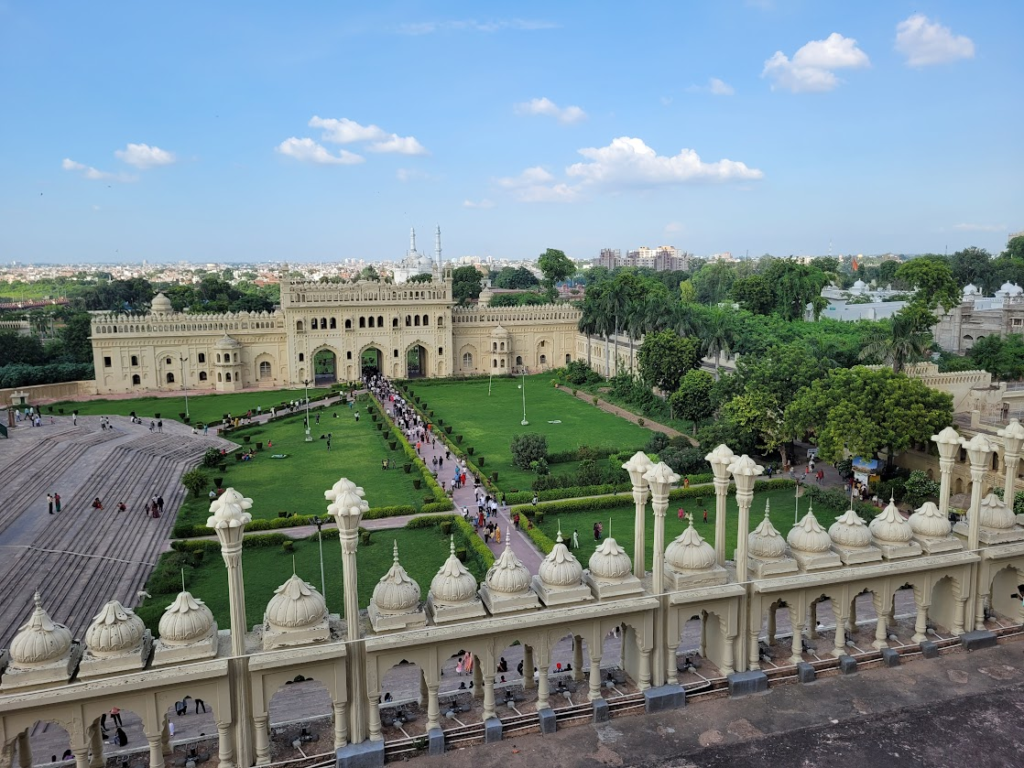
The Bhul Bhulaiya was particularly interesting. It is said that there are 1024 ways to reach the terrace but only two to come back that is through the first gate or the last gate.


Next stop was Rumi Darwaza (Turkish Gate) that is an imposing gateway which was built by Nawab Asaf-Ud-Daula in 1784. It is believed that the gate was modelled after a historical gate in Istanbul. Rumi refers to Rûm, the historical name used by the Islamic world to denote the region roughly corresponding to Anatolia in Turkey.
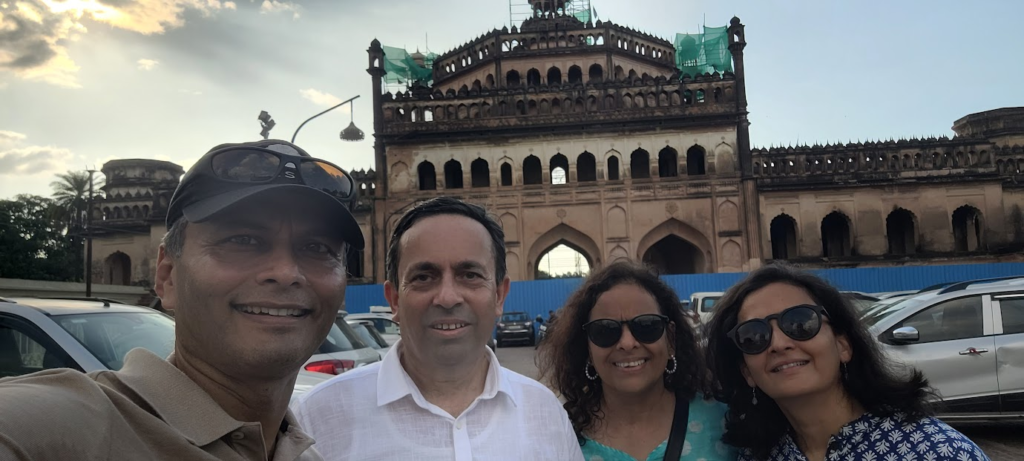
Few other sights next to Rumi Darwaza as we walked around.

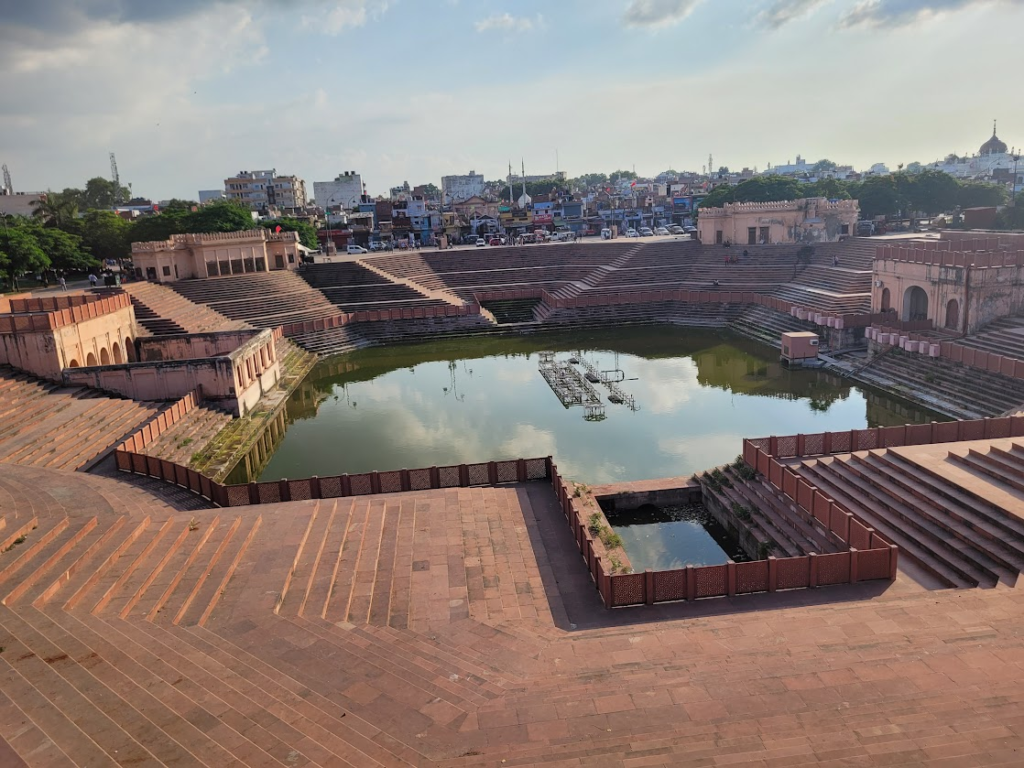
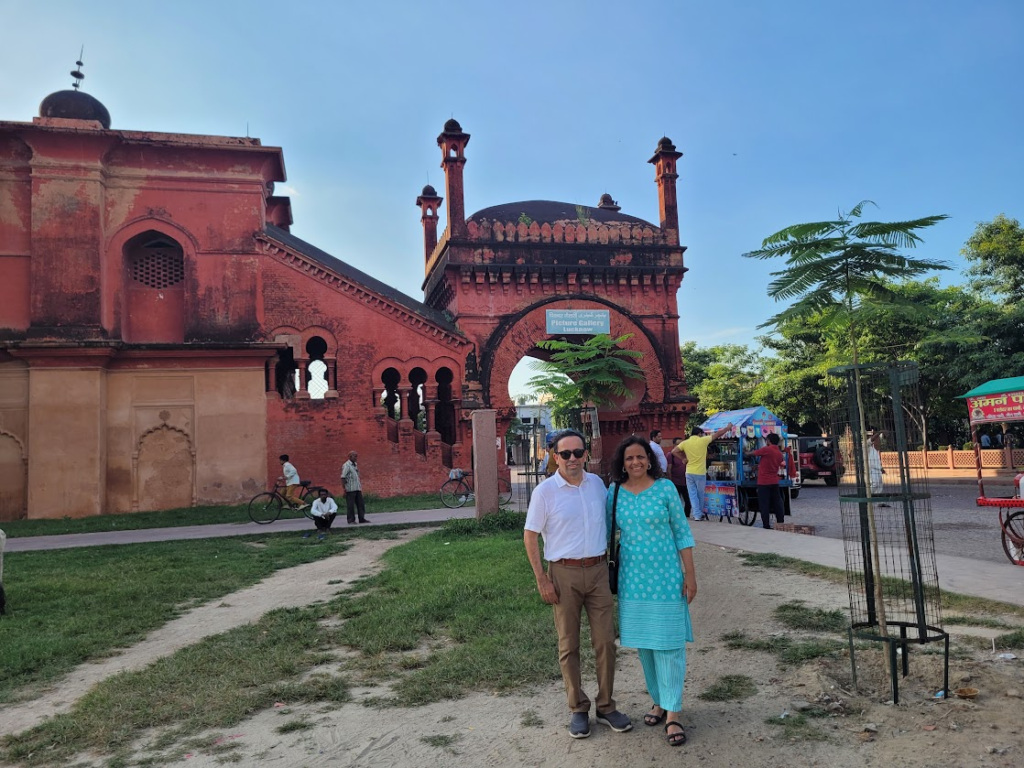
Chota Imambada was a congregation hall for Shia Muslims, built by Muhammad Ali Shah, the Nawab of Awadh in 1838. The building is also known as the Palace of Lights because of its decorations and chandeliers during special festivals, like Muharram.
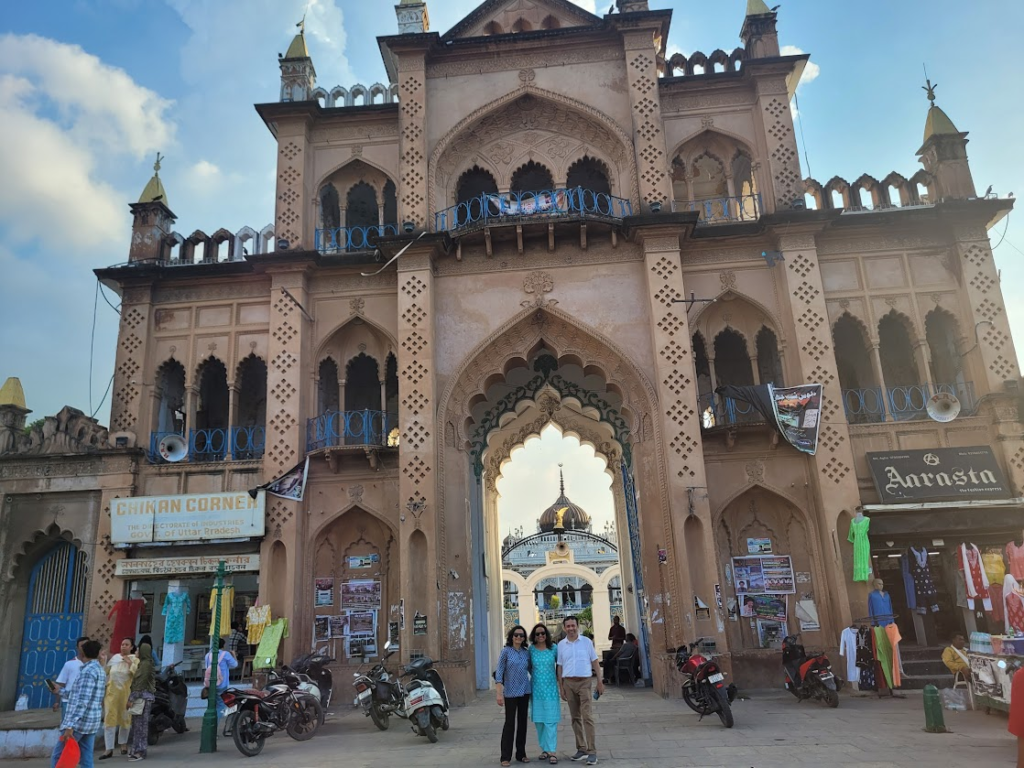
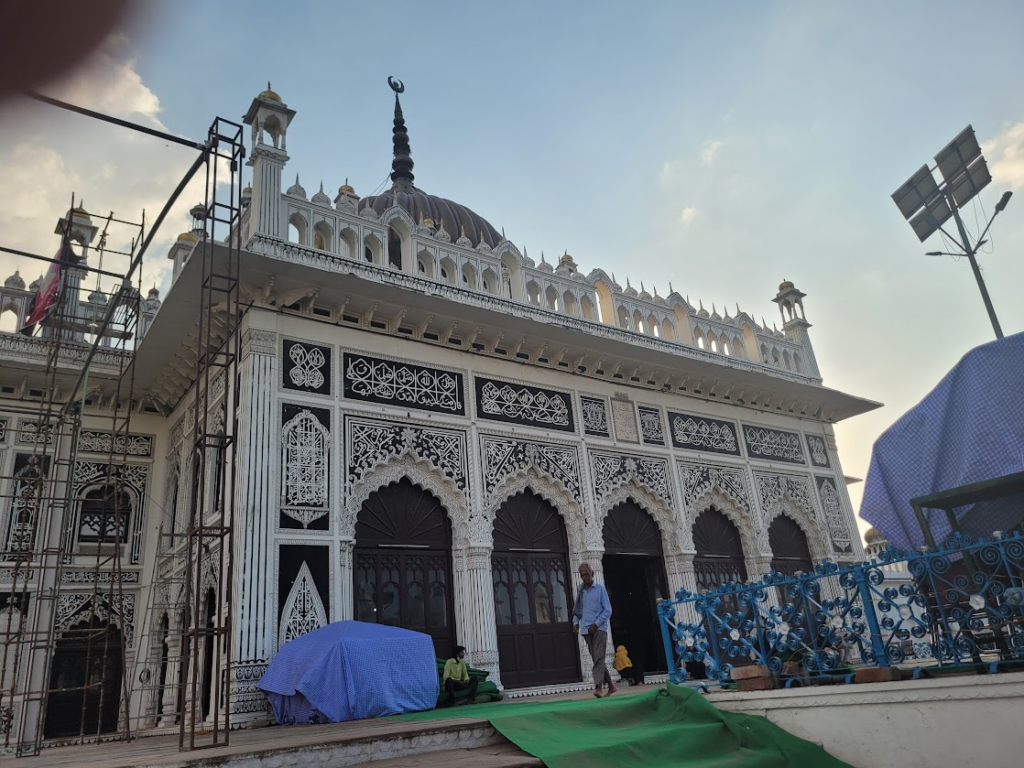
From there, we visited the British Residency. The Residency served as the residence for the British Resident General who was a representative in the court of the Nawab. Construction took place between 1780 and 1800 AD. During the 1857 War for Indian Independence, the Residency was subject to the Siege of Lucknow, where the British were surrounded and fought back. The Residency now exists as ruins but is very well preserved and maintained. It is definitely worth a visit.
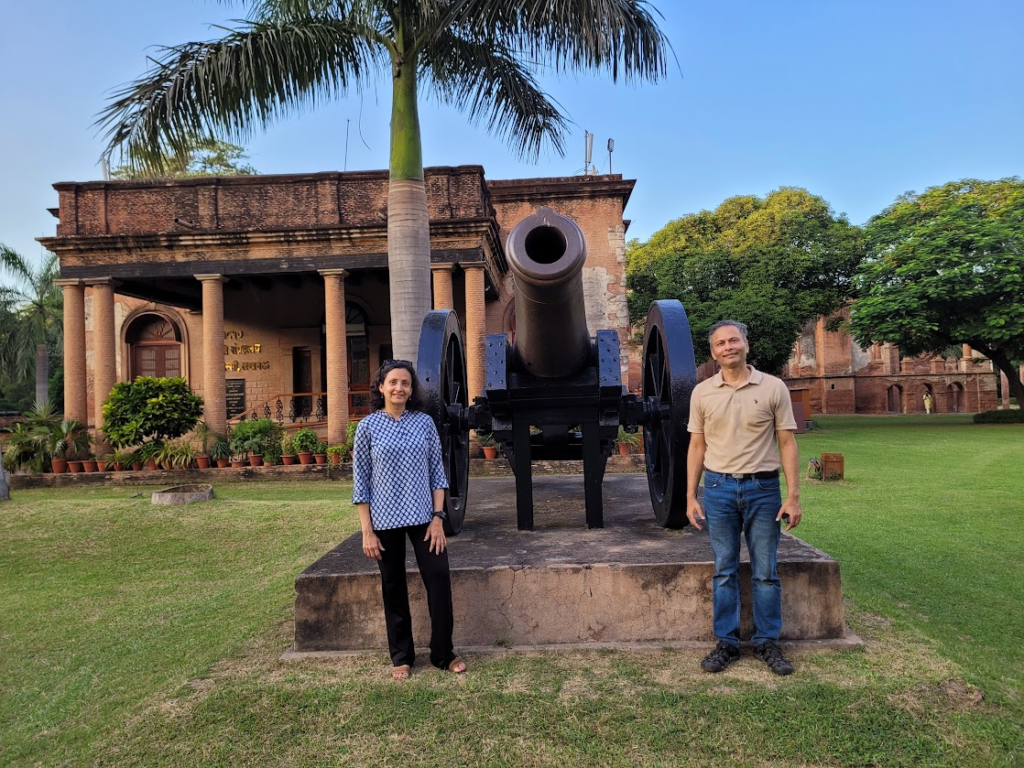
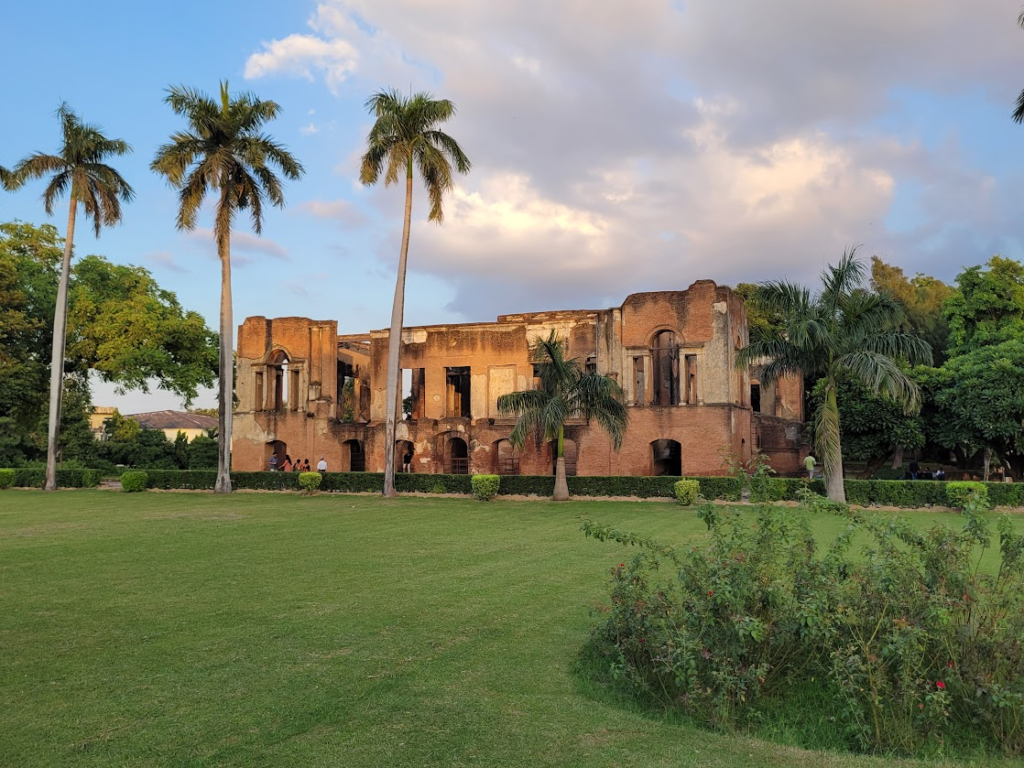

Our last stop for the day was La Martinière College, an elite private educational institution located in Lucknow, the capital of the Indian state of Uttar Pradesh. The college consists of two schools on different campuses for boys and girls. La Martinière College (for boys) was founded in 1845 and La Martinière Girls’ College was established in 1869 by a Frenchman Claude Martin who served the British East Indian Company.
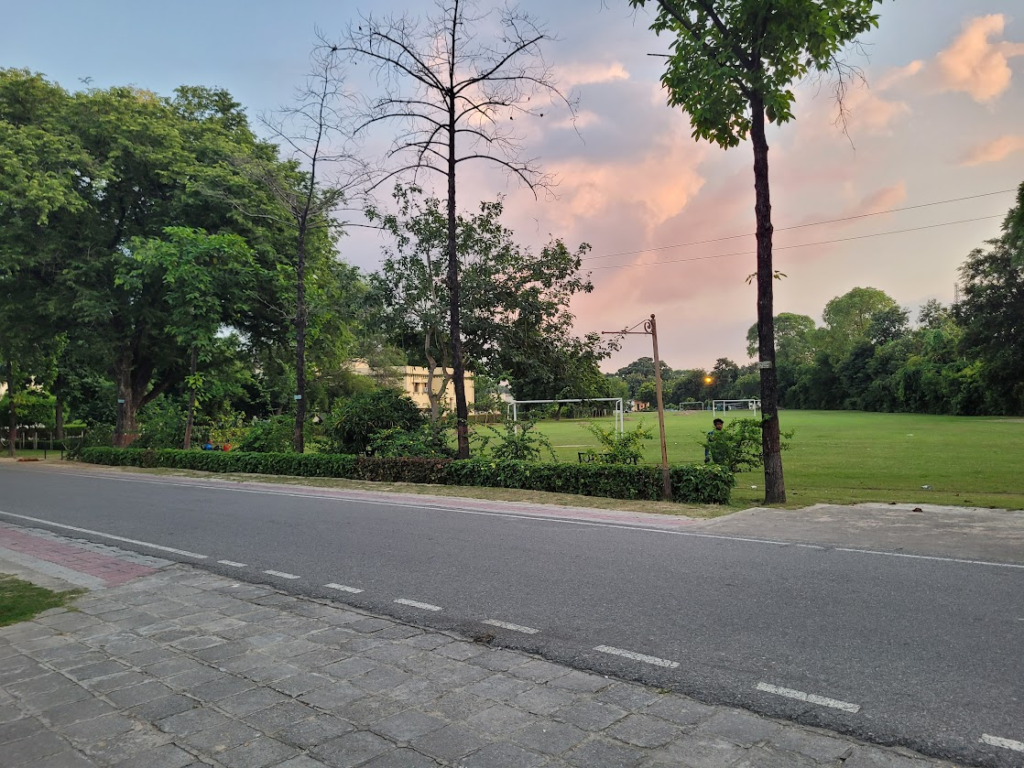
Our day ended by dropping Abhay and Maithili at Lucknow Airport. They had a flight to catch to Pune that night.
Oct 2: Lucknow
Anu and I spent the day hanging out in Lucknow. We celebrated Anu’s birthday that day. We visited Kailash Joshi, a classmate from IIT Kanpur for lunch. He regaled us with stories of his experiences in Lucknow with the Uttar Pradesh Mafia in the 1990s.
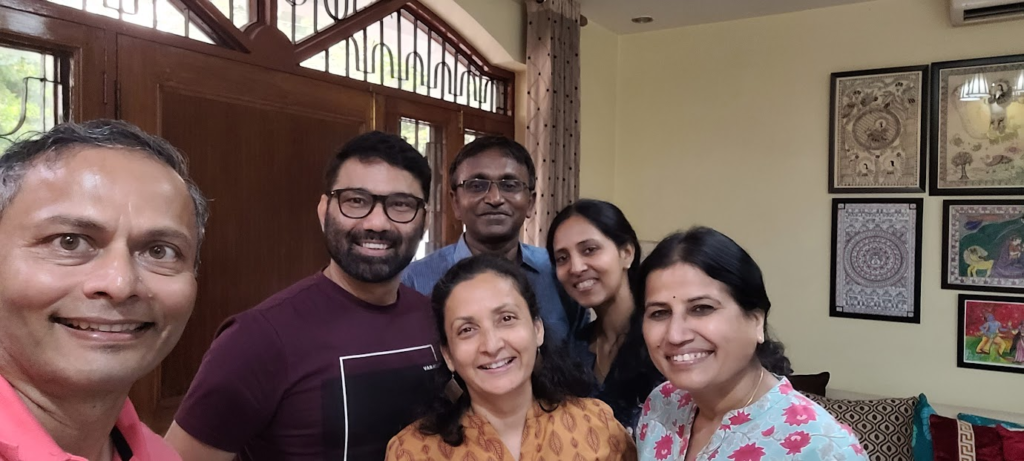
In the afternoon, we went to Ada, a designer Chikankari shop and did some additional shopping.
We took a flight in the evening and reached Pune at 1 am after midnight. It was a memorable trip.








I read the Banaras portion and very detailed blog. Enjoyed it thoroughly. I will read other pieces too.